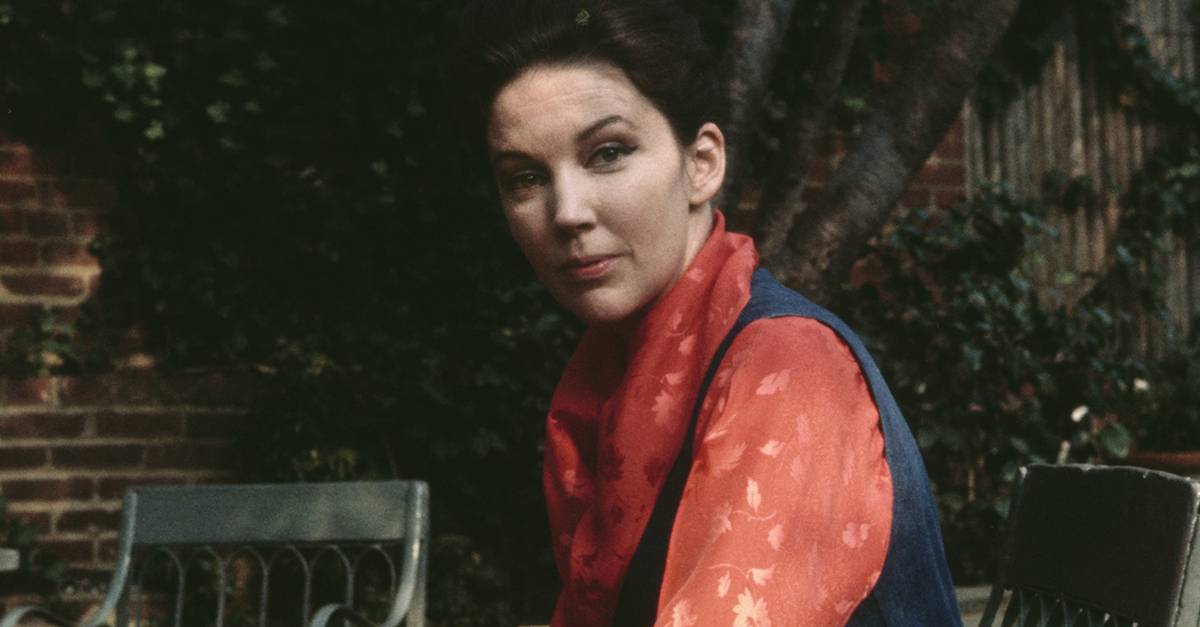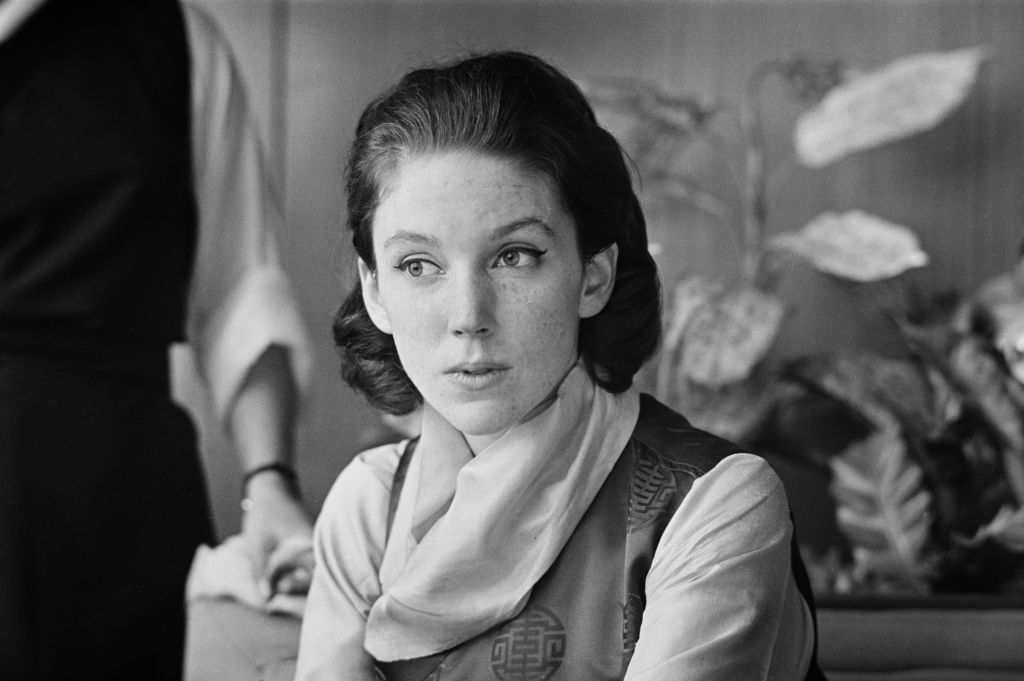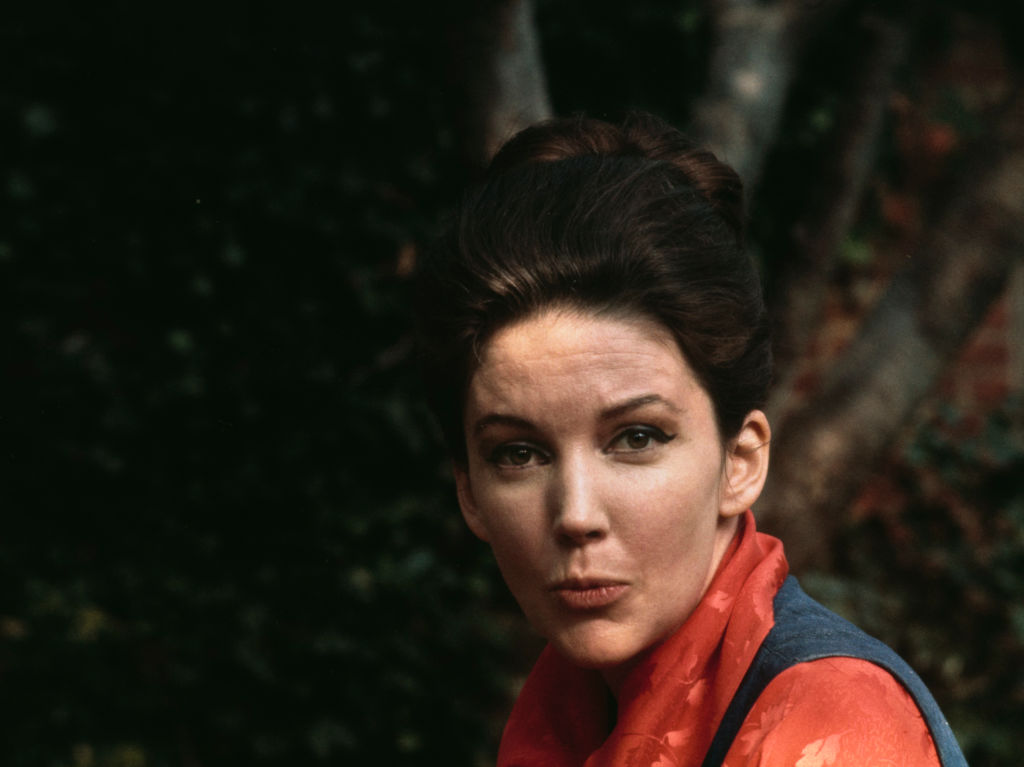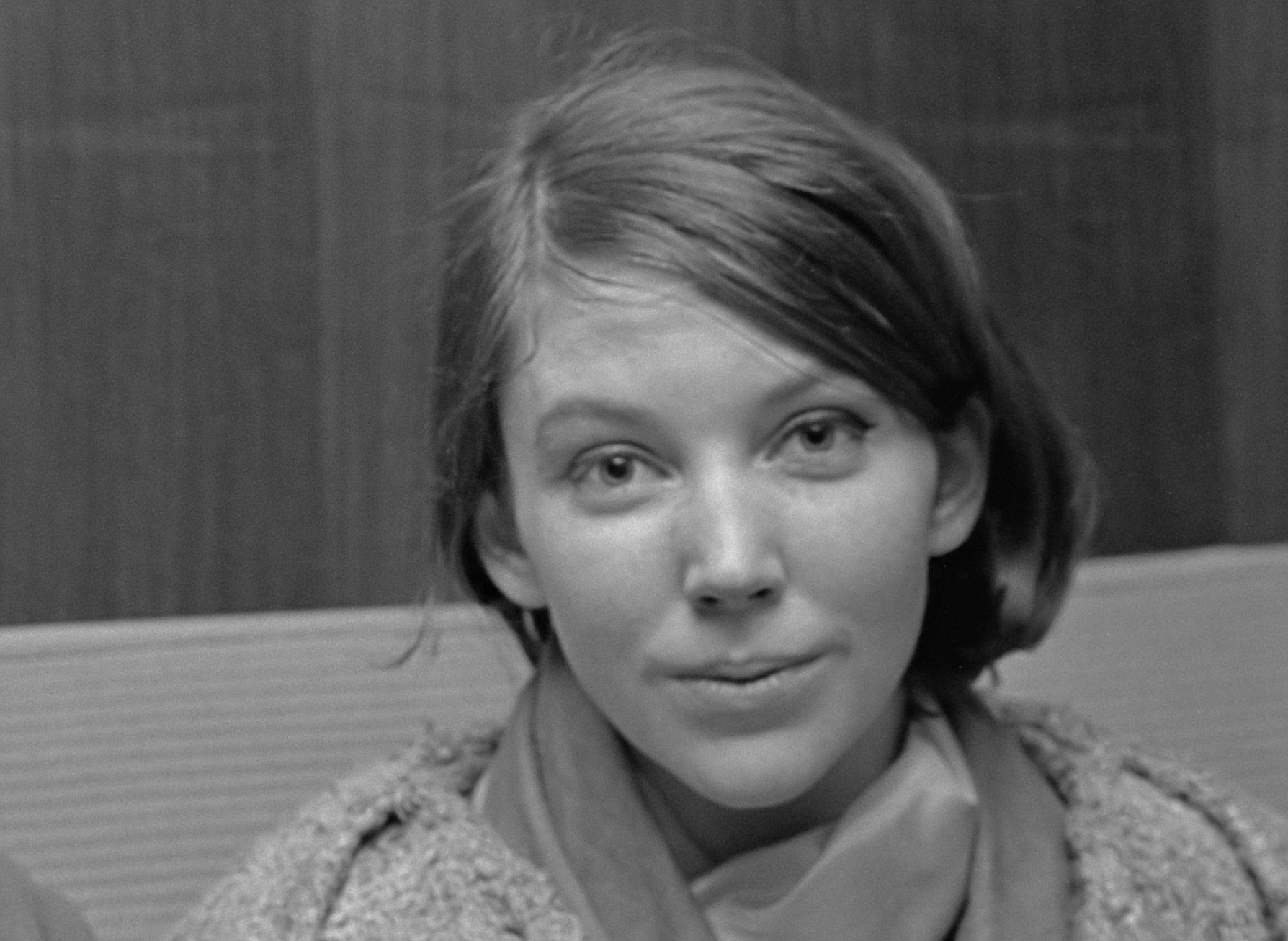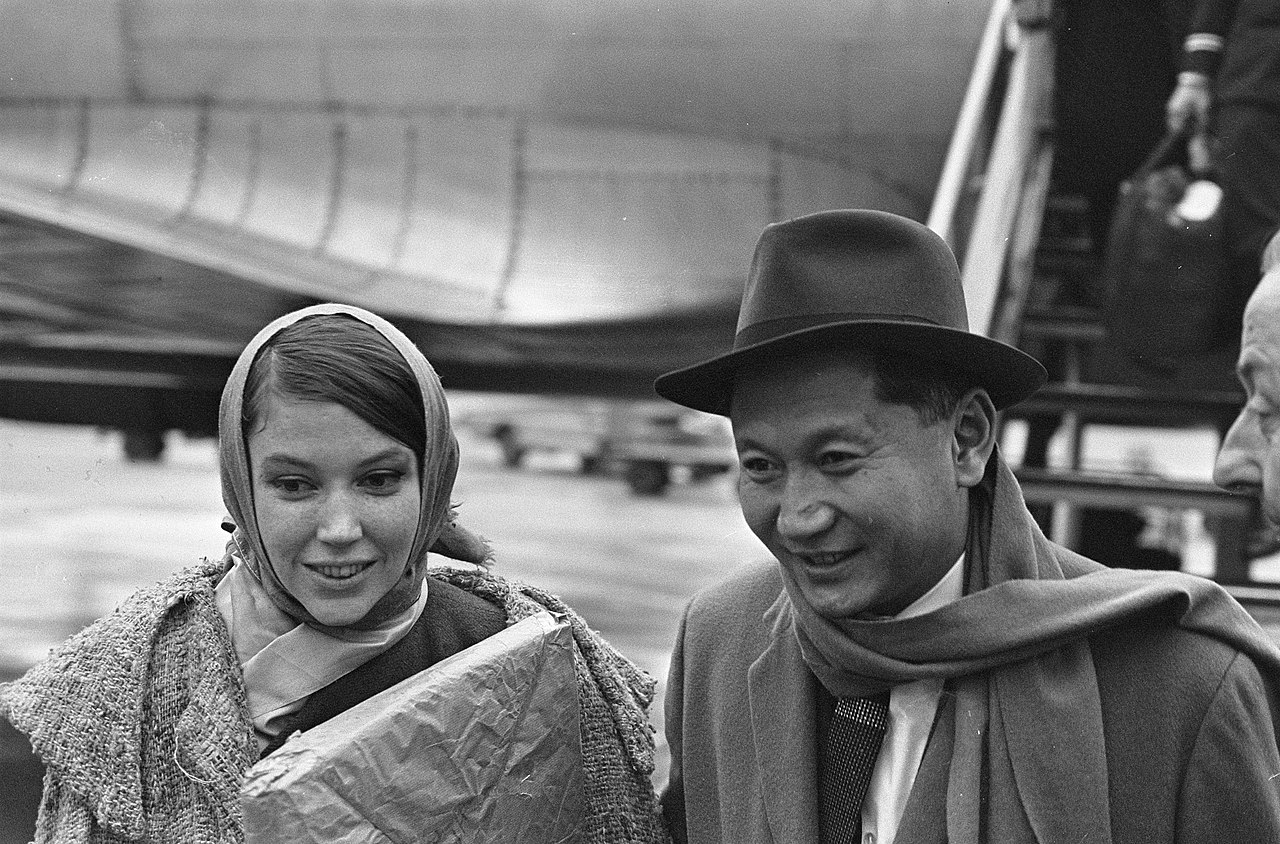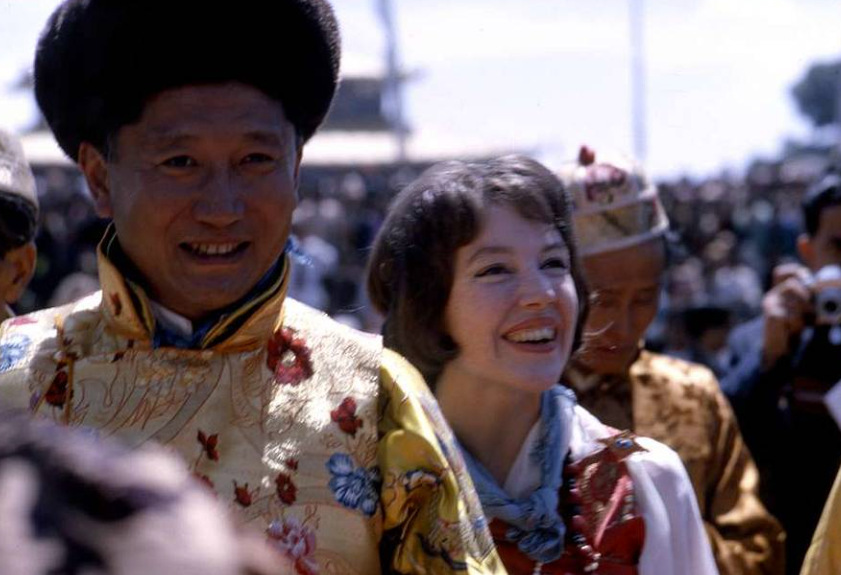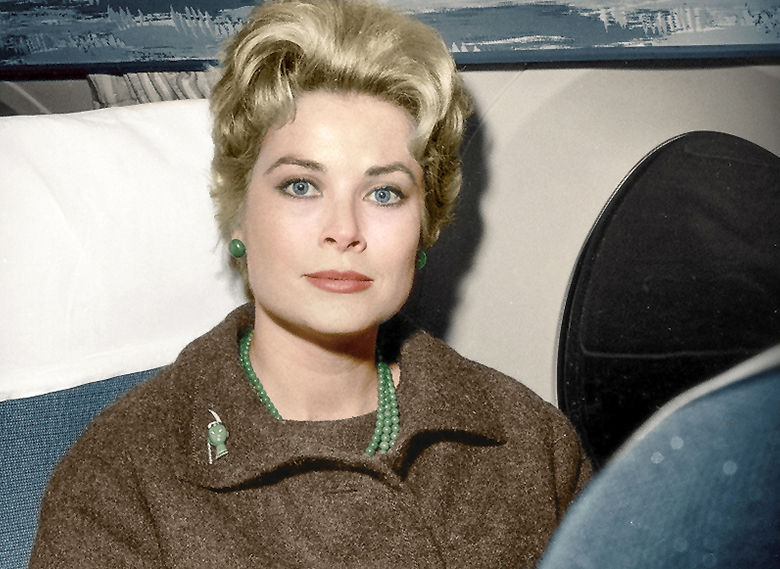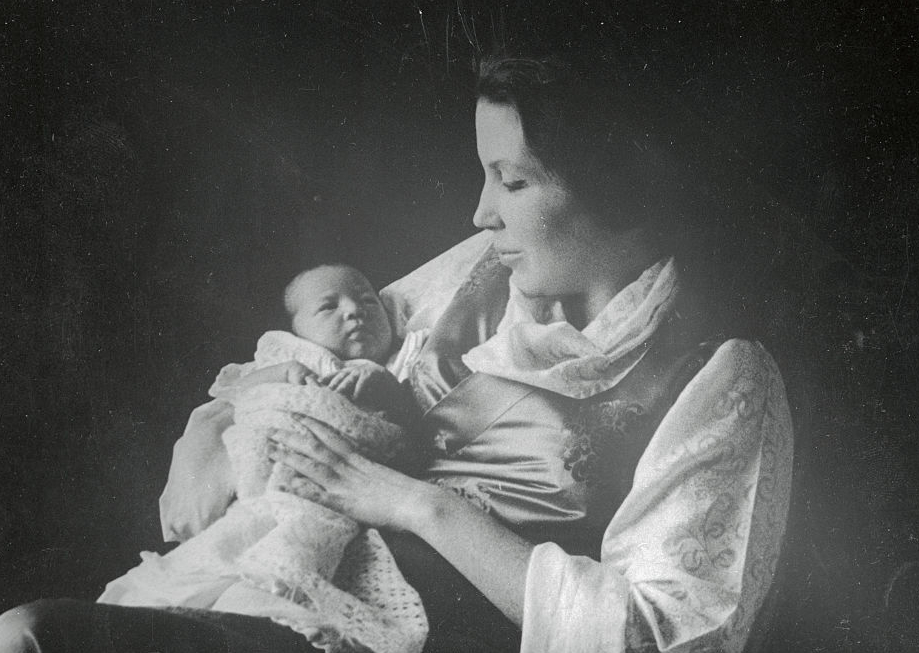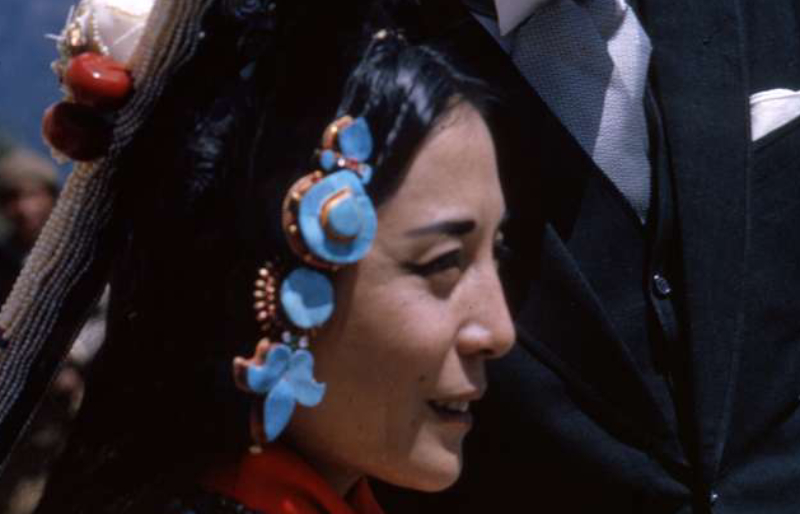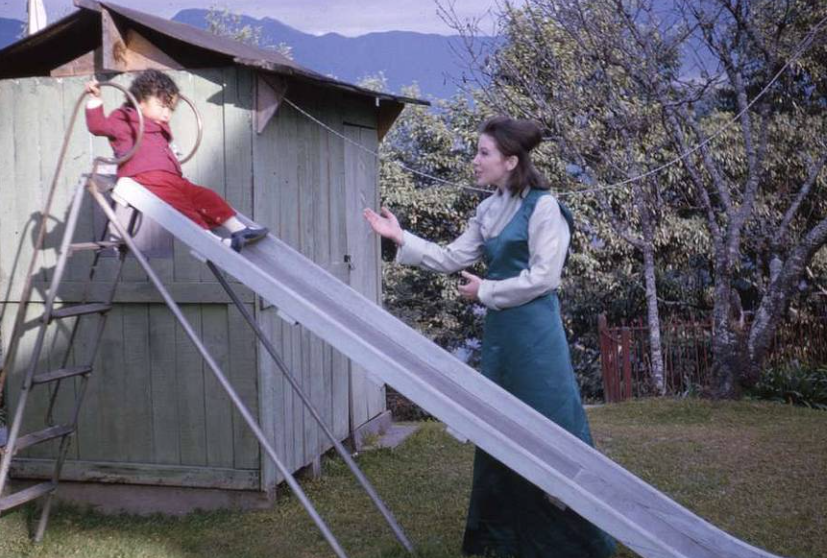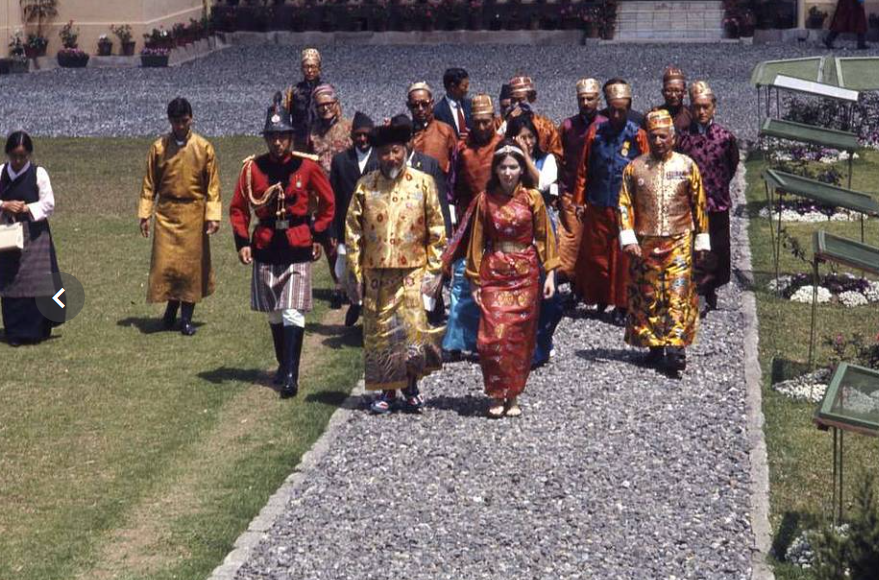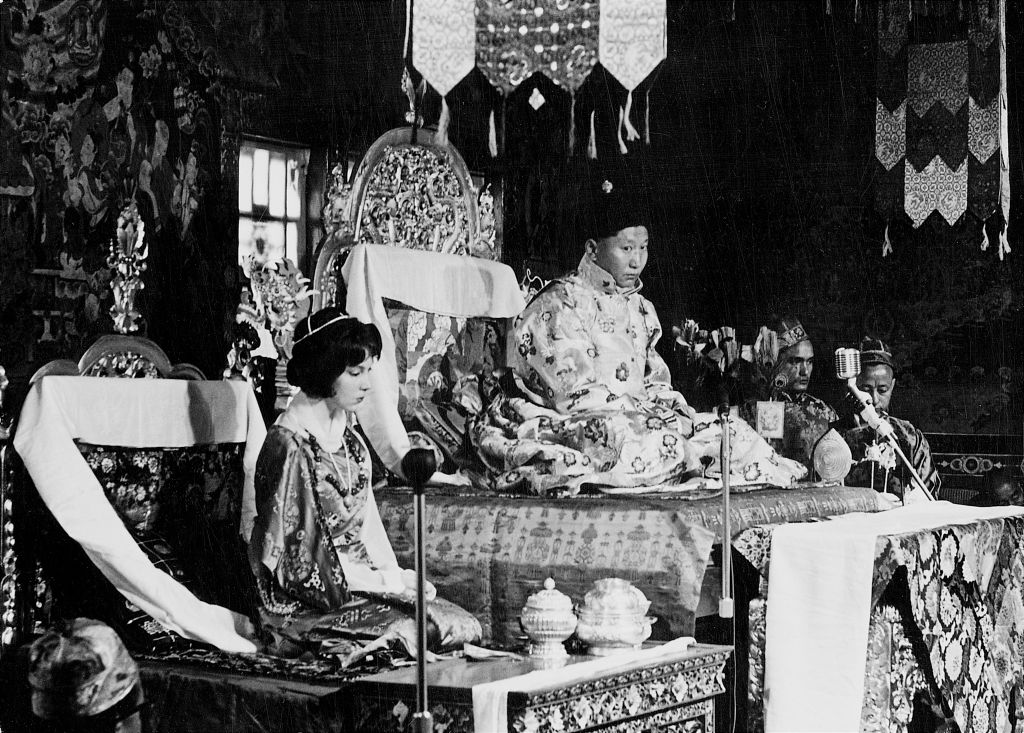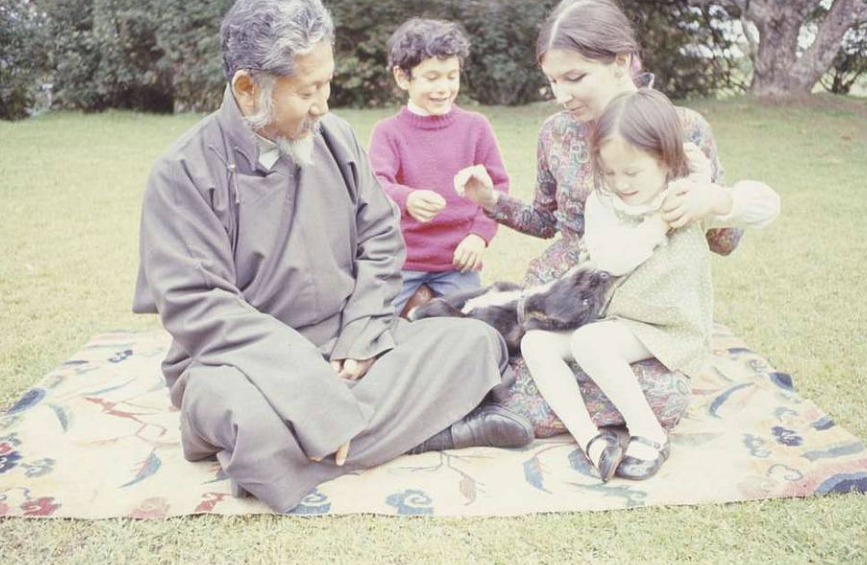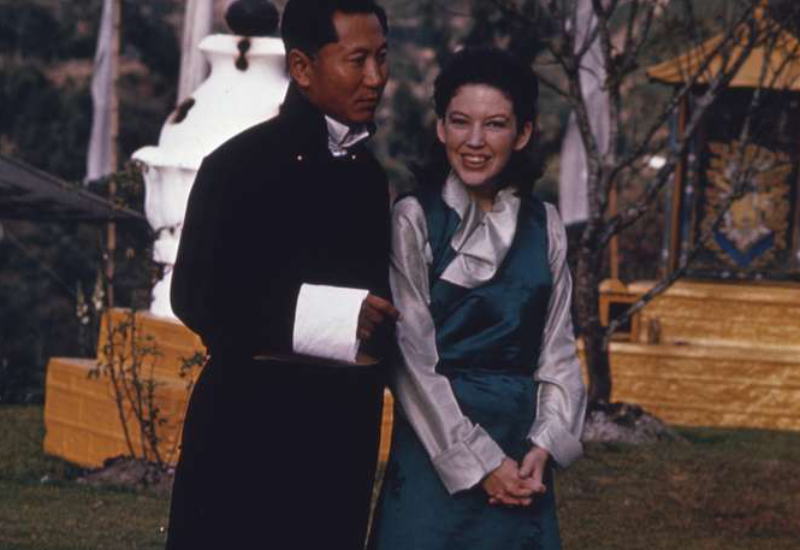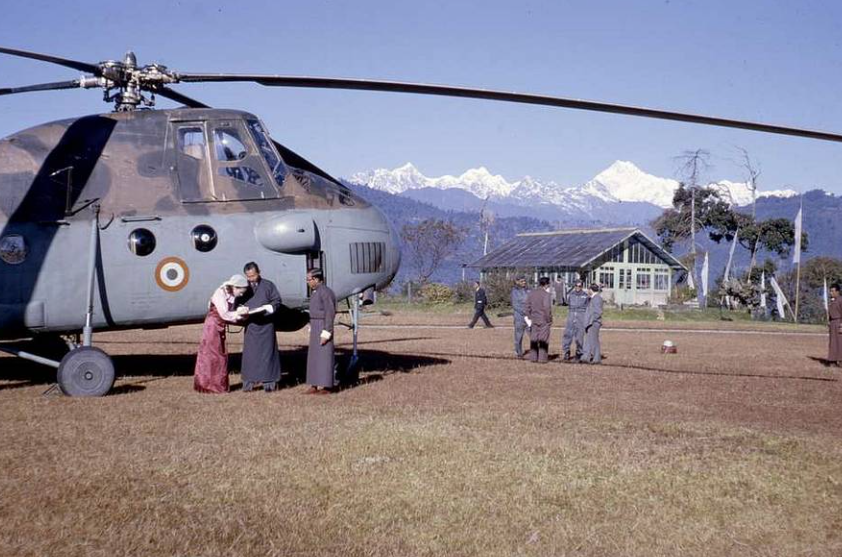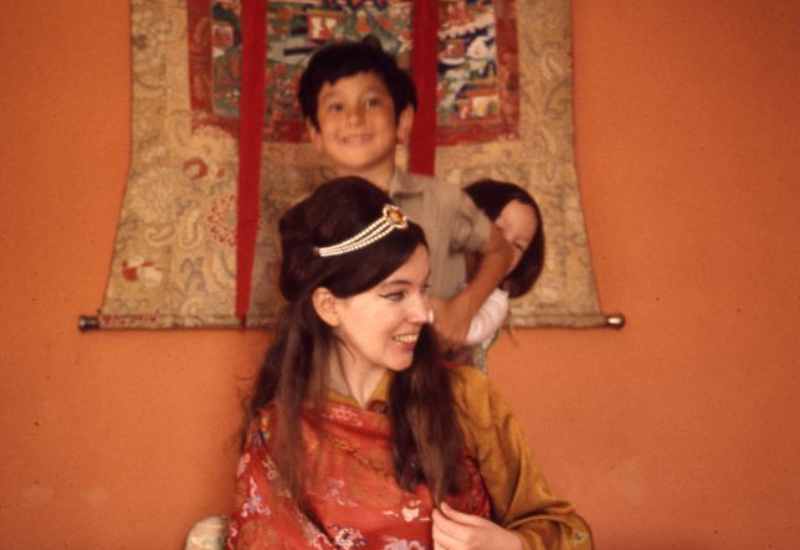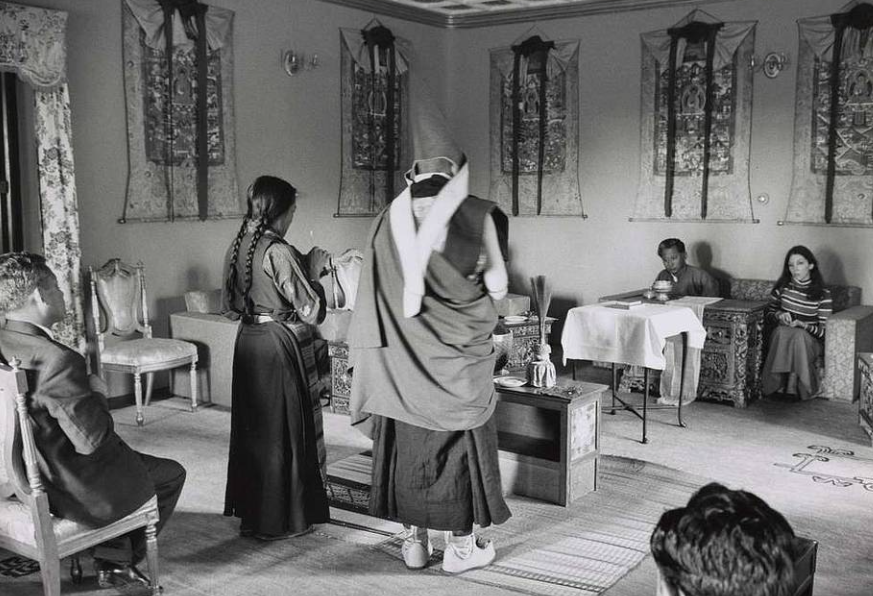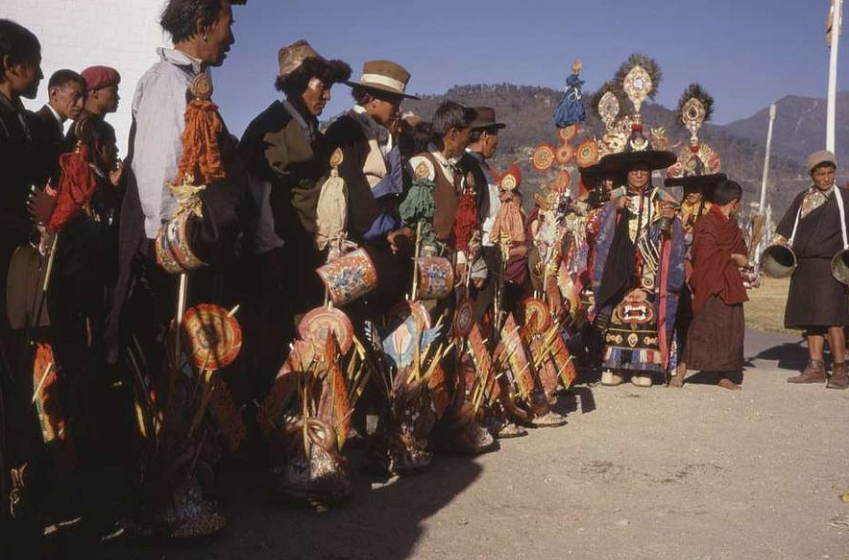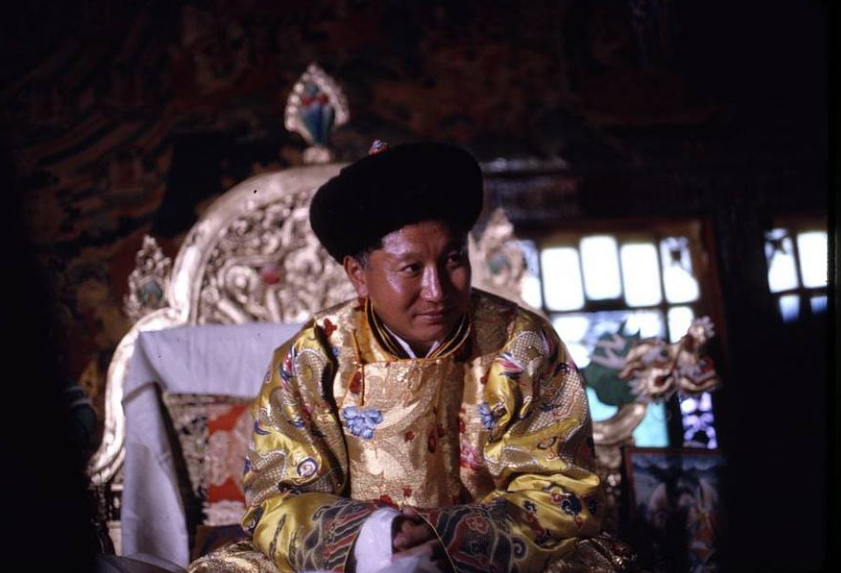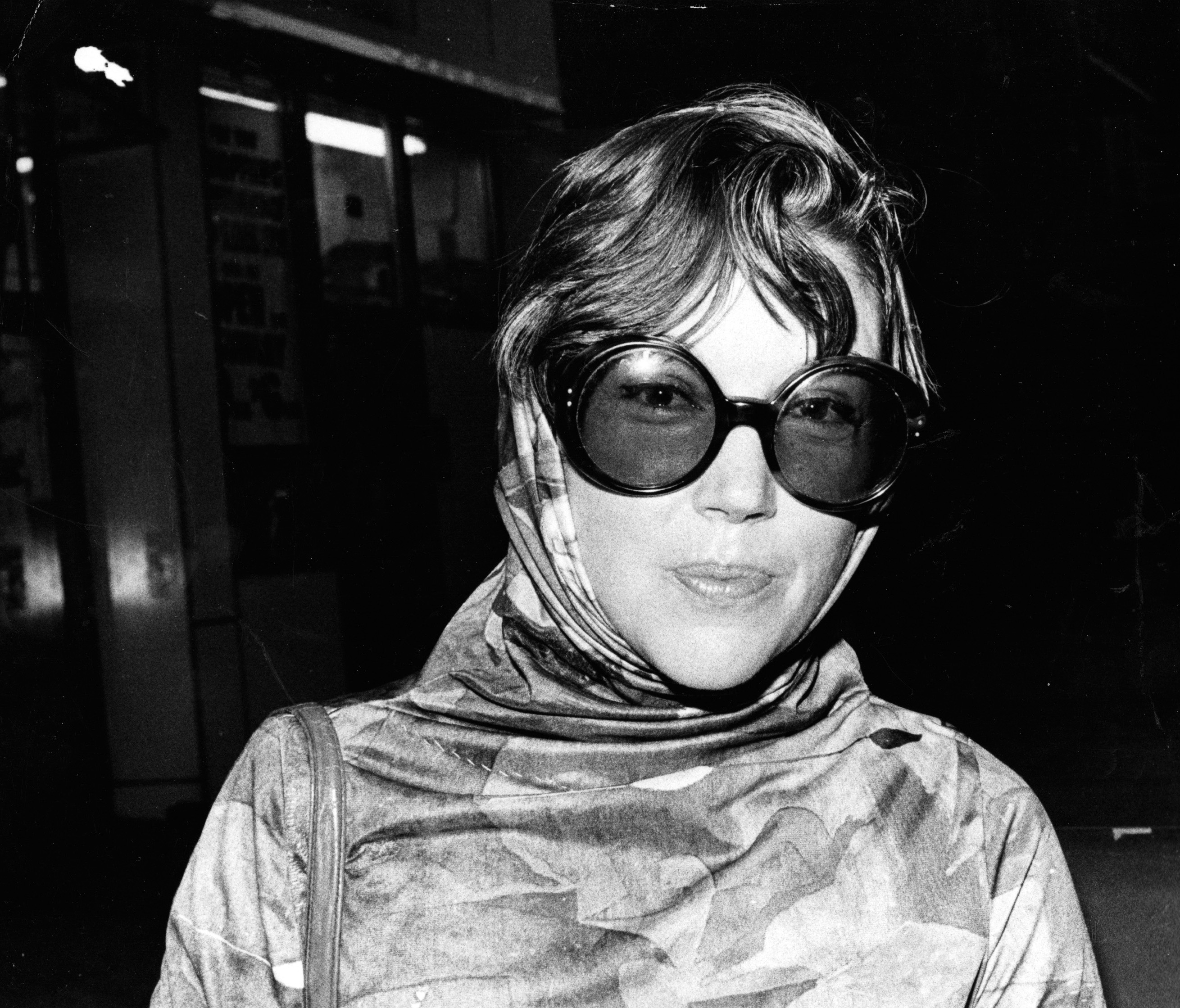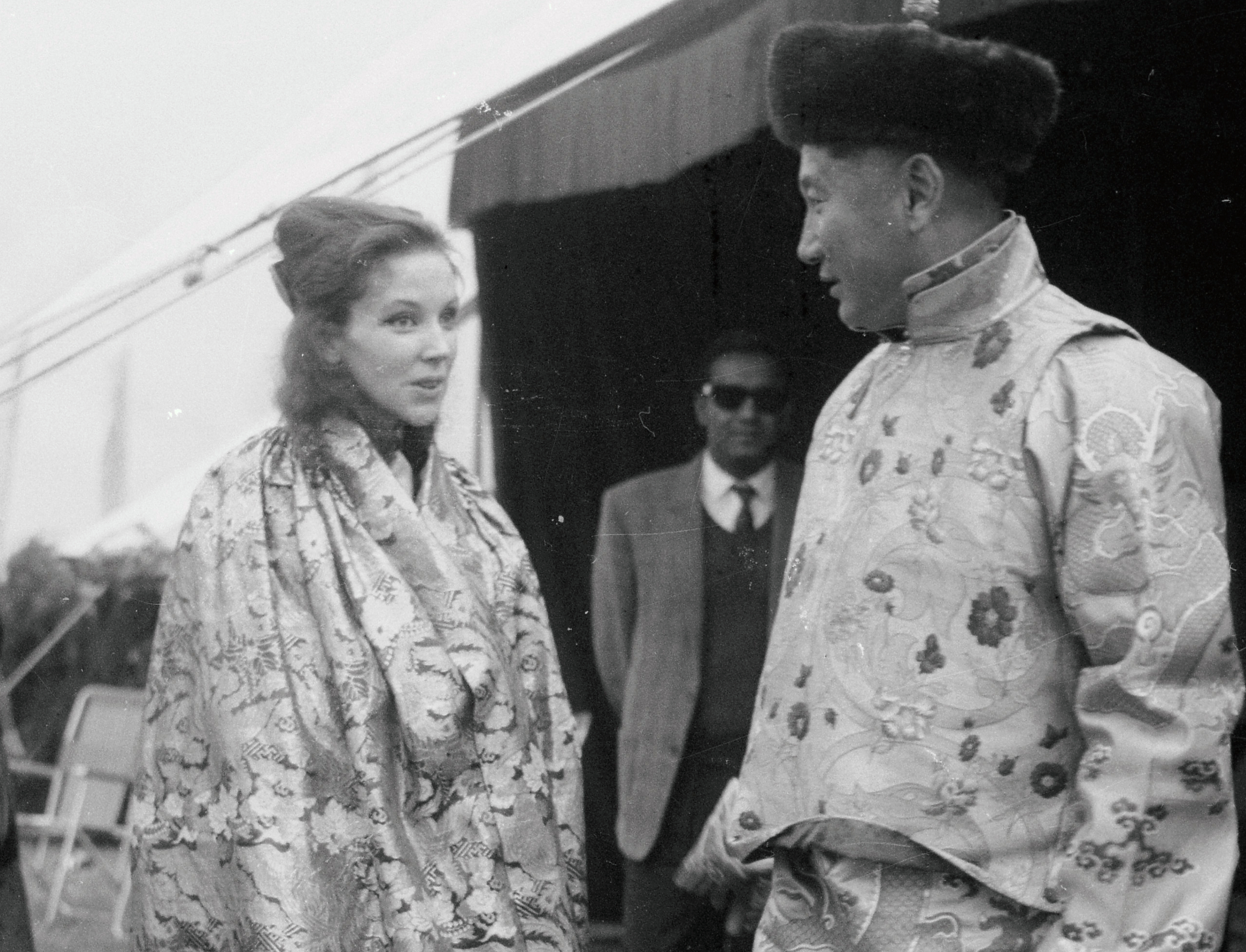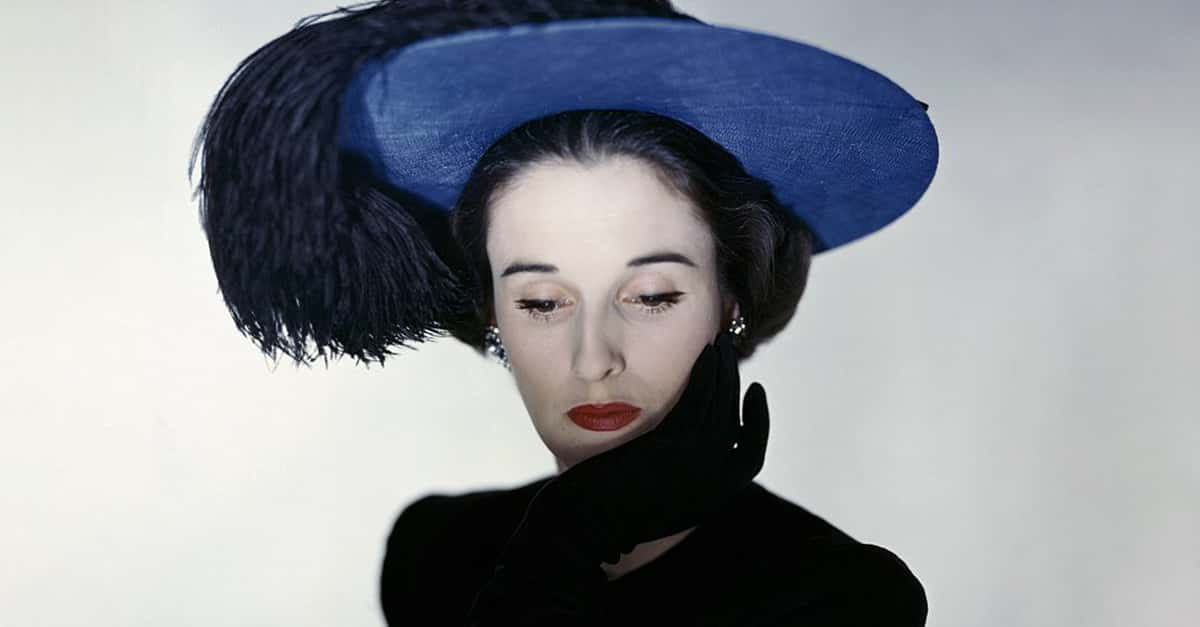Hope Cooke is a unique figure in American history—but hers was a fairy tale with a serious dark side.
1. She Was An American Princess
Hope Cooke is a unique figure in American history. A wealthy socialite from a young age, she attracted tabloid attention worldwide in the 1960s for her marriage to a Sikkimese prince. This ordained her with a royal title, a rarity among United States citizens. The wedding was a joyous occasion. But, a series of twisted events bookended it—events that she could not cover up, even with an opulent royal lifestyle.
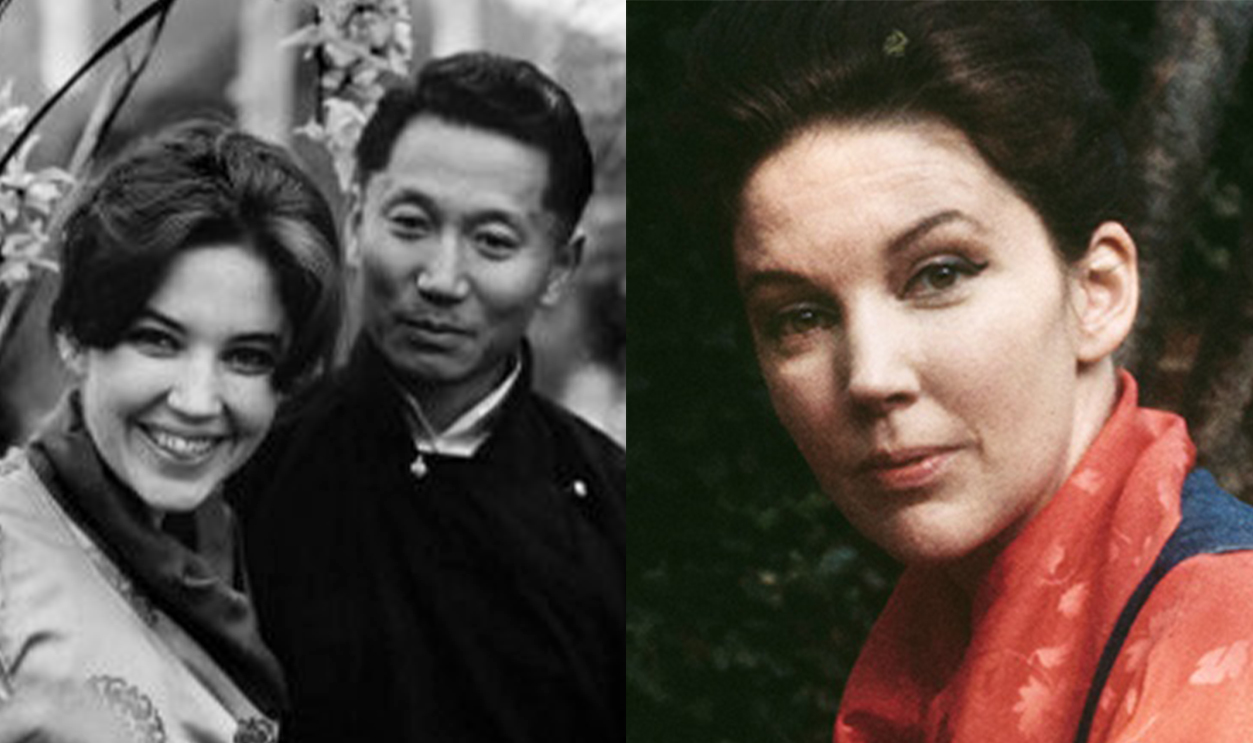
2. Her Parents Were Of The Skies
Hope Cooke was born on June 24, 1940 in San Francisco. Her father was John J Cooke, an Irishman and flight instructor, who met her mother, Hope Noyes, on the job. Cooke’s mother was an amateur pilot and daughter of a wealthy shipping magnate. Hope Cooke was named after her mother.
But this name was not a prophetic sign of things to come; rather, she faced early abandonment and tragedy.
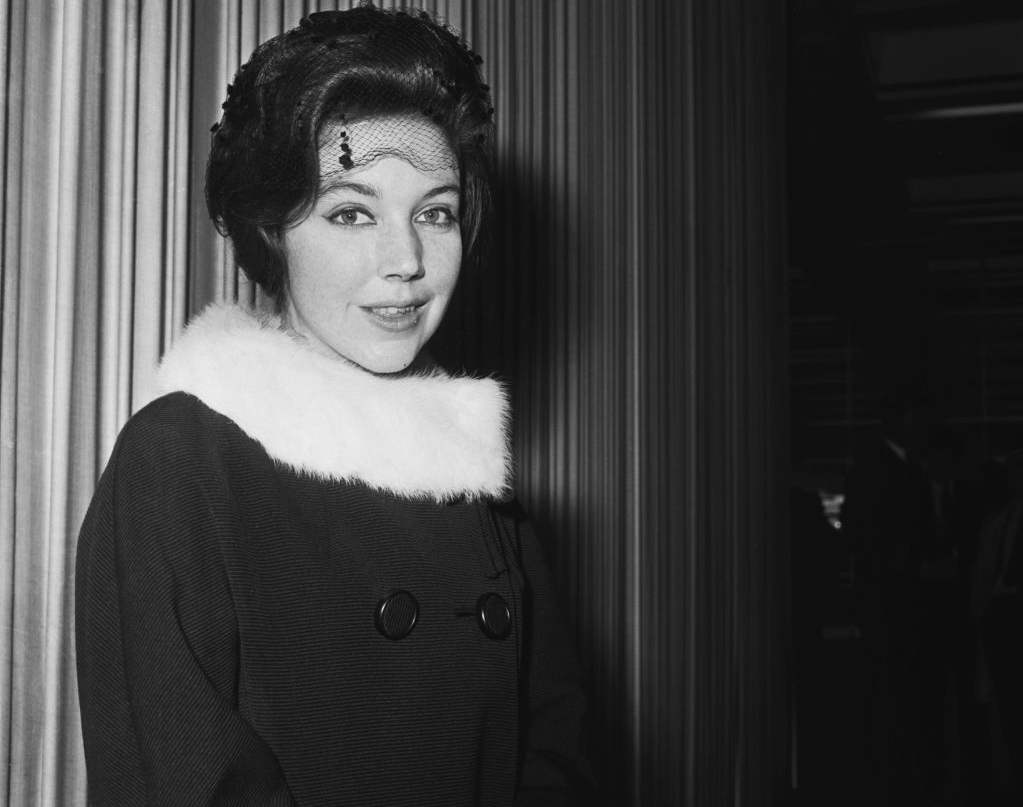 Evening Standard, Getty Images
Evening Standard, Getty Images
3. Her Parents Exited Early
Neither of Cooke’s parents stuck around long. Her father unceremoniously abandoned his wife and child shortly after his daughter came along—but what happened to her mother was so much more disturbing. Hope Noyes tragically perished in a solo plane crash when her daughter was just two years old. Noyes allegedly took flight with a near-empty gas tank and Cooke would later say in her autobiography that she believed her mother took her own life.
There were painful reasons for her uncertainty.
4. She Never Got Any Closure
Having been so young when Noyes perished, Cooke never learned of the fate of her mother’s remains. As she got older, no one in her family would tell her whether they recovered her mother's body and, if so, where it now rested.
This prevented Cooke from getting any closure over the loss of her mother, a feeling she would struggle with well into adulthood. And her new guardians did not help her loneliness.
5. Her Grandparents Were Aloof
Following their mother’s passing, Cooke and her older half-sister moved to New York to fall under the guardianship of her maternal grandparents. Helen and Winchester Noyes were a well-off couple, the latter being the president of a successful international shipping brokerage firm.
But they had no grandparental instinct, housing the two young girls in a separate apartment across the hall from their own. And the living arrangements were not the only distance they enforced.
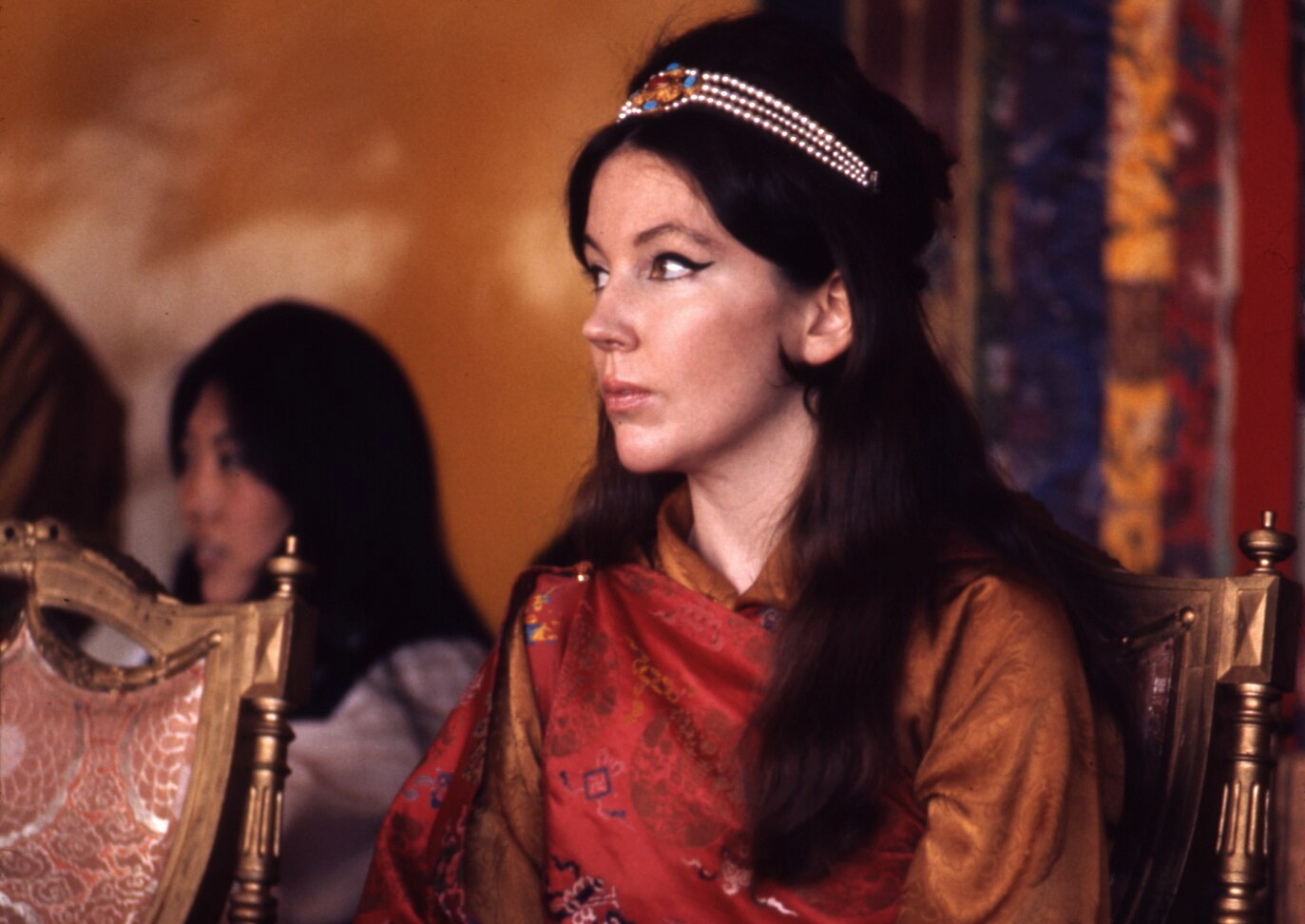 Alice S. Kandell, Wikimedia Commons
Alice S. Kandell, Wikimedia Commons
6. Several Nannies Raised Her
Though she grew up with privilege and wealth, it would be a mistake to call Cooke’s childhood comfortable. Not only did her grandparents not want the children to share a home with them, but they barely took part in parental duties at all. Hope and her sister grew up with a succession of governesses. And that’s not the worst part.
The girls’ grandparents’ vetting system was lackluster at best, as many of these nannies had a sadistic streak.
7. Her Forgetfulness Earned Her A Beating
In her autobiography, Hope Cooke recounts several tales of cruelty at the hands of her nannies. Raised Episcopalian, her grandparents would often hire religious caretakers. One particularly pious governess would beat Cooke with a coat hanger. Her transgression? Forgetting part of the Lord’s Prayer. But Hope knew hands were for more than praying.
8. She Was A Sinner
Another incident Hope Cooke once recounted illustrates the free-spirited nature that would come to define her adulthood—and the conservative reaction of her religious minders. After a scandalized nanny caught Hope in the act (solo), she enacted a twisted punishment. She tied Cooke’s hands to her bedpost at night to prevent any further exploration.
Not all punishments were religious in nature, however. And Hope was not the only one to suffer.
9. They Punished Her Sister Too
Cooke’s half-sister, Harriet Townshend, endured just as much misery at the hands of their so-called caretakers. Suffering from a bout of illness as a child, Harriet made the unfortunate mistake of throwing up during dinner. The presiding governess answered with an inhuman punishment for the poor girl. She forced her to eat her own vomit.
It’s unclear how much of this heinous treatment the girls’ grandparents were aware of. But it is safe to assume that they may not have cared at all.

History's most fascinating stories and darkest secrets, delivered to your inbox daily.
10. Her Grandparents Practically Disowned Their Daughter
Throughout Cooke’s childhood, her grandparents refused to speak about the girls’ mother, what she was like, or the circumstances of her demise. They made no secret that they disapproved of her marriage and would often dismiss her passing as irresponsible, likely bitter about the responsibility left to them of caring for her children.
But they wouldn’t have to look after them much longer…
 Defense Visual Information Distribution Service, Picryl
Defense Visual Information Distribution Service, Picryl
11. She Came Under The Care Of A US Diplomat
Finally, the girls got relief—if through tragic means. Cooke’s grandfather passed on when she was 12 and her grandmother followed three years later. Still a minor, Hope found herself in the custody of her aunt and uncle. The couple lived a jet-setting lifestyle, thanks to Cooke’s uncle’s position as a diplomat.
Cooke’s taste for adventure would begin here.
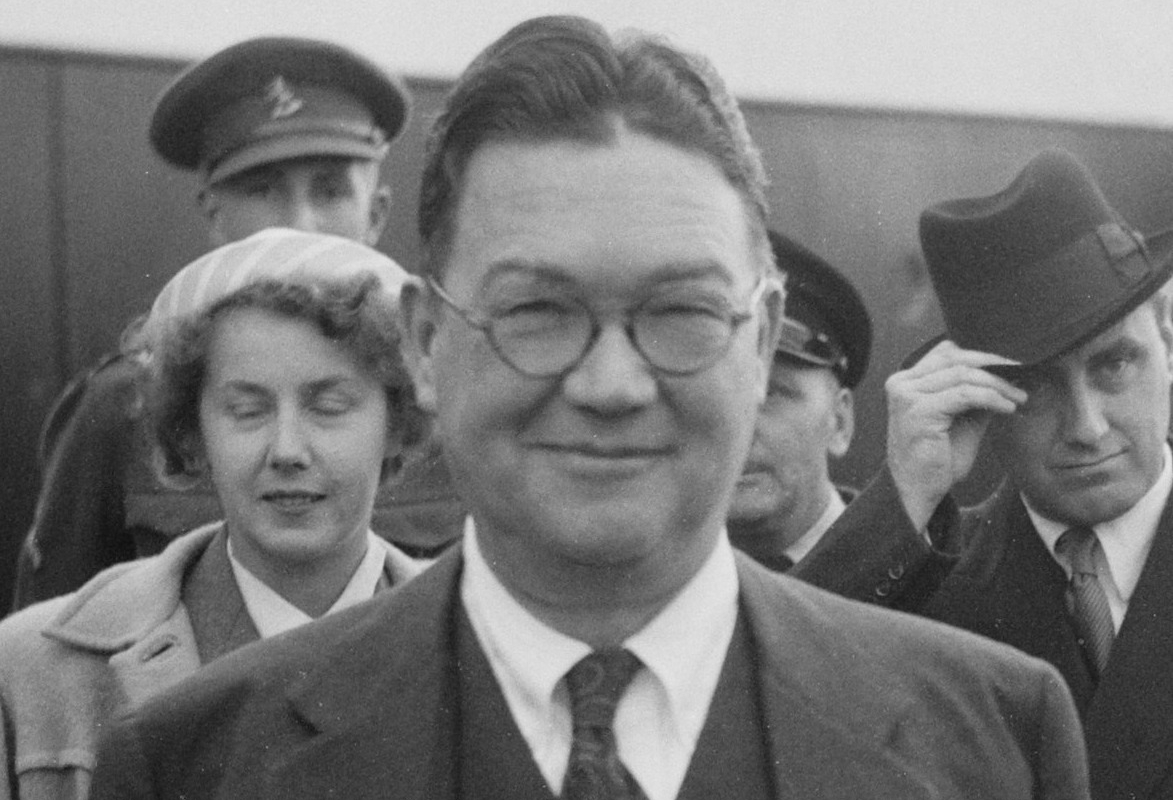 Noske, J.D., CC BY-SA 3.0 NL, Wikimedia Commons
Noske, J.D., CC BY-SA 3.0 NL, Wikimedia Commons
12. She Finished High School Abroad
After some convincing, Cooke’s aunt and uncle agreed to let her finish high school in Tehran. It was an energizing change of scenery. Cooke got the opportunity to attend lavish parties hosted by high-ranking Iranian politicians and royalty. She met many prominent figures from around the world, exposing her to different cultures and customs.
It was here where her fascination with the Asian continent would begin.
 Tehran City hall of Pahlavi Dynasty, Wikimedia Commons
Tehran City hall of Pahlavi Dynasty, Wikimedia Commons
13. Her Privilege Gave Her An Educational Advantage
After graduating high school in Iran, Hope Cooke enrolled in Sarah Lawrence College. Inspired by her travels to Iran and a brief trip to India, she desperately wanted to study Asian History. Unfortunately for her, this was not an option for freshmen at Sarah Lawrence, and Cooke had to take European History instead—but she found her way around their rules.
Due to her status, Cooke’s professors allowed her to write all her papers on India. Her privilege gave her more control over her education. It also afforded her an interesting living situation.
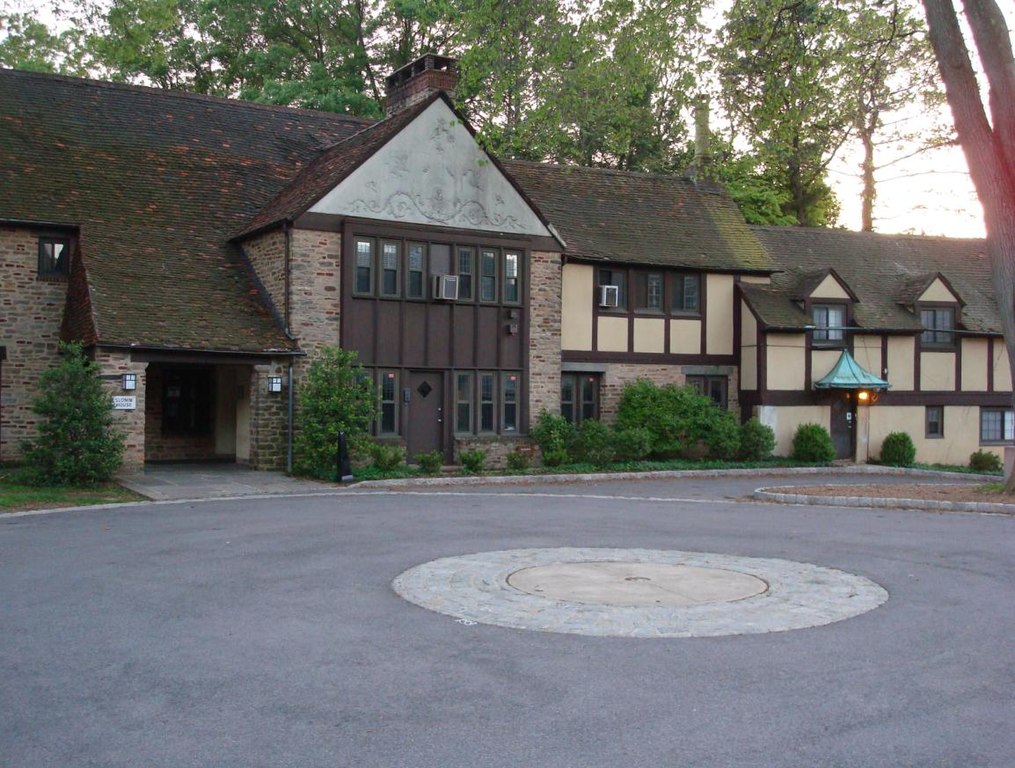 EdRichardson, CC BY 3.0, Wikimedia Commons
EdRichardson, CC BY 3.0, Wikimedia Commons
14. She Had A Famous Roommate
Though Hope Cooke was fabulously wealthy, she longed for the authentic “college experience”. And so, she decided to move into an apartment off-campus with some roommates. One of them would eventually become famous in her own right: future Hollywood actress Jane Alexander. This experience was probably not as good for her as it was for Cooke.
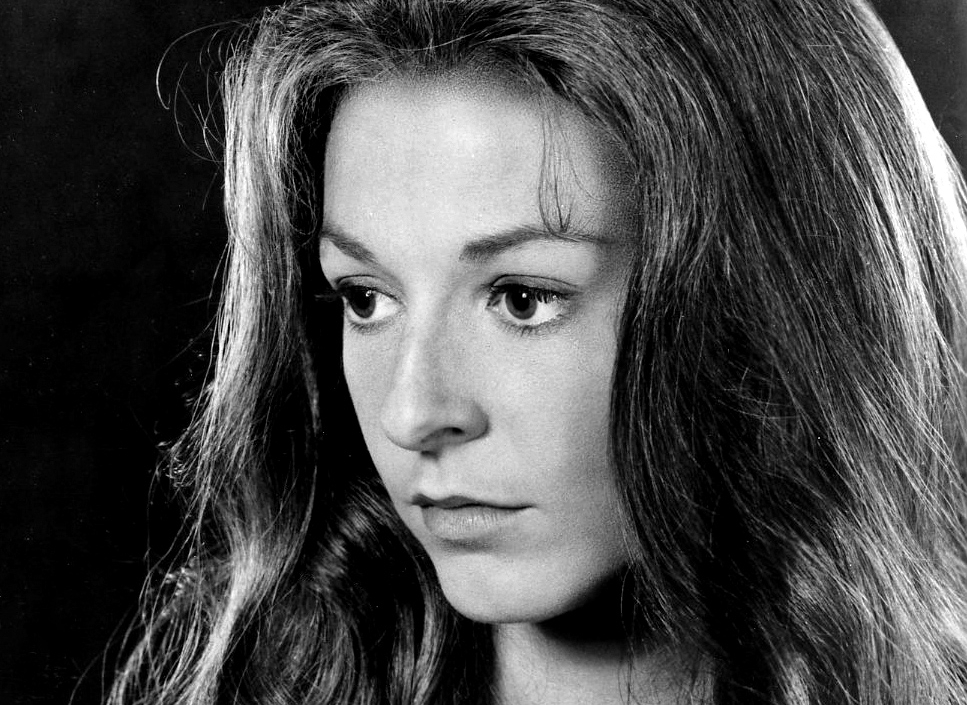 Unknown Author, Wikimedia Commons
Unknown Author, Wikimedia Commons
15. She Was A Nightmare To Live With
Hope Cooke took the idea of living the college experience seriously—perhaps a little too seriously. Her room was filled with rotting food, while cig burns covered her furniture. Most egregiously of all, Cooke received a rabbit as a gift, but neglected to look after it and the poor animal eventually passed on. The worst part?
She failed to notice and only removed the lifeless bunny after her roommates began to complain about the smell. They finally got a break when she left for the summer.
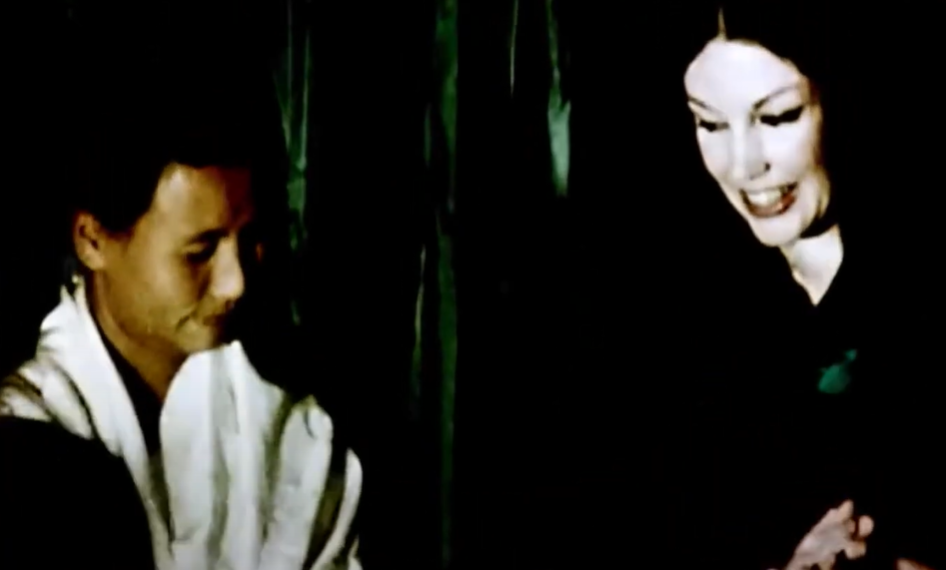 The Chogyal of Sikkim Palden Thondup Namgyal, Sikkim (1971)
The Chogyal of Sikkim Palden Thondup Namgyal, Sikkim (1971)
16. She Took An Extravagant Educational Vacation
Over the course of her studies, Hope Cooke took several summer trips to India, fell in love with the landscape and people, and would take any excuse to go back. One such excuse was the reasoning behind a fateful trip to Darjeeling in 1959: she was ostensibly there to take, of all things, a typing course. But she acquired much more than proficiency with a typewriter there.
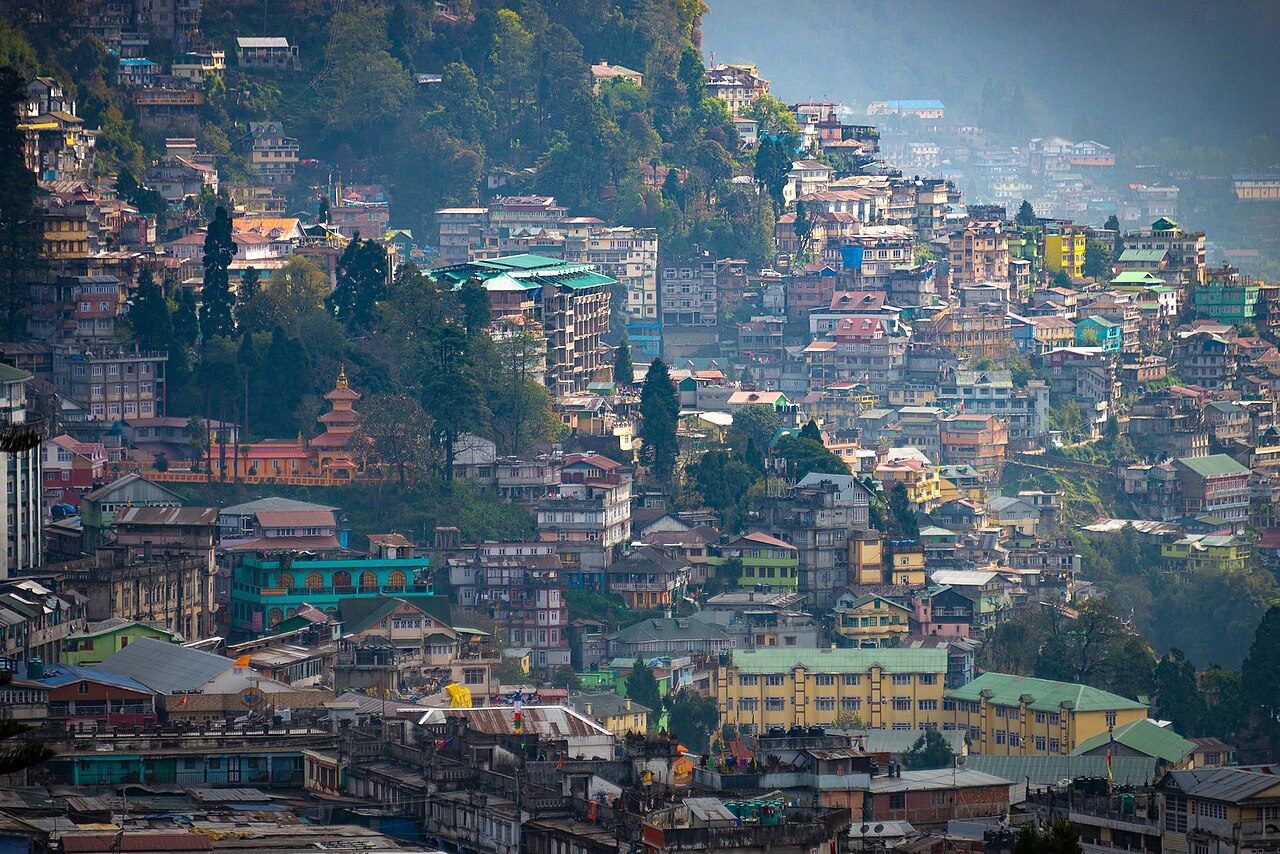 Unknown Author, Wikimedia Commons
Unknown Author, Wikimedia Commons
17. She Attracted The Eye Of Royalty
Hope Cooke insisted on extravagance even when in India, and for her typing course trip to Darjeeling, she opted to stay in the Windamere hotel, an opulent, colonial building. While there, she met and quickly developed a deep and unexpected connection with a fellow guest: Palden Thondup Namgyal, the Crown Prince of then-independent state Sikkim.
The Crown Prince, recently widowed, quickly saw the part that Cooke could play in his life.
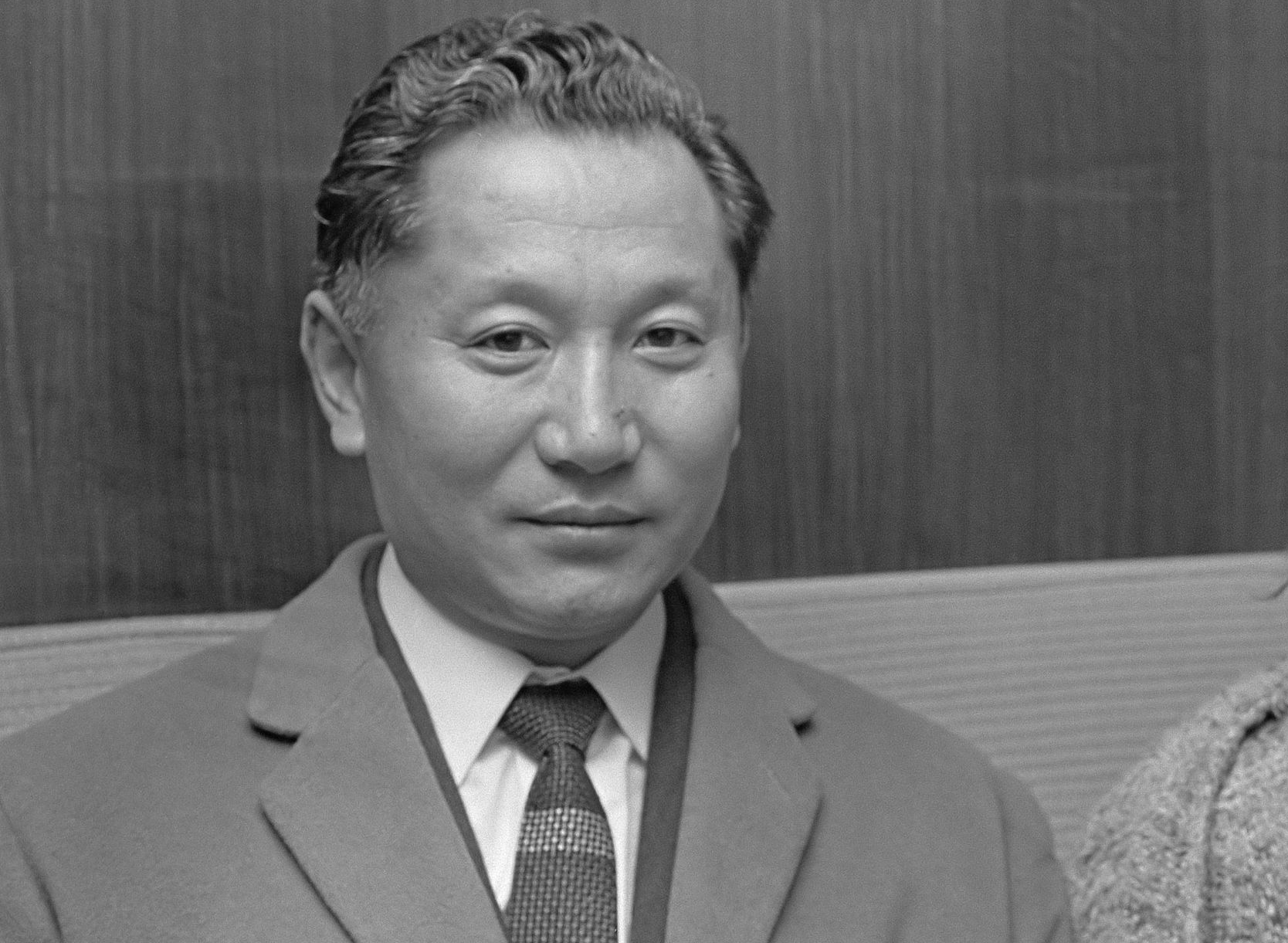 Ron Kroon for Anefo, Wikimedia Commons
Ron Kroon for Anefo, Wikimedia Commons
18. She Needed Him And He Needed Her
Hope Cooke and the Prince were an unlikely pairing and later, in her autobiography, she laid bare the truth about their “connection”. Cooke said that she was a young, starry-eyed student fascinated with Indian spirituality, and was in search of some form of rootedness in the country.
He, at least according to Cooke, was looking to find a mother to raise his children. If you had asked them at the time, however, they would have given a different story.
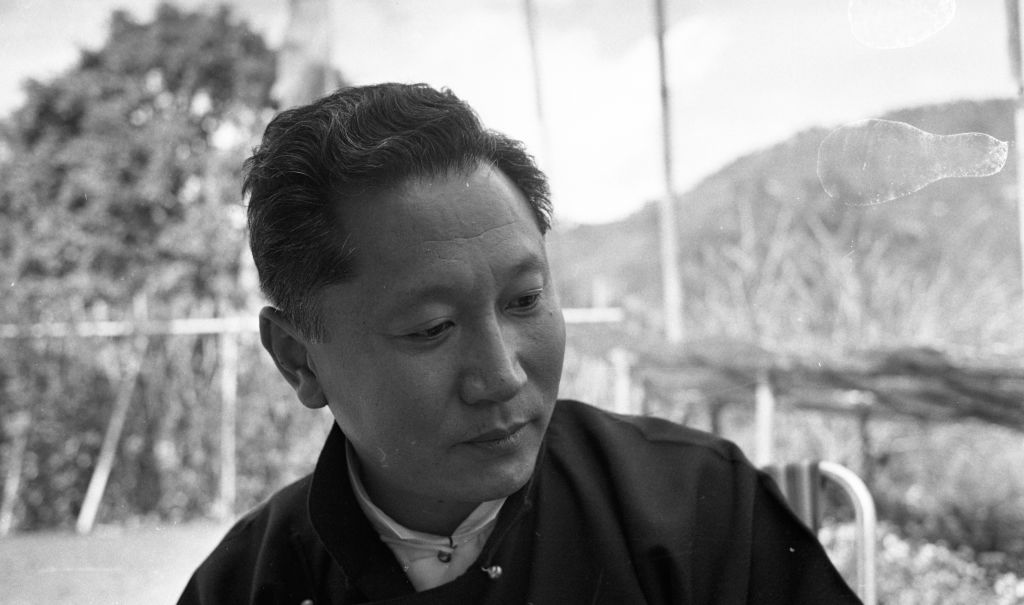 REPORTERS ASSOCIES, Getty Images
REPORTERS ASSOCIES, Getty Images
19. She Shared His Pain
Hope Cooke and Prince Namgyal also connected on a deeper, emotional level. Both had suffered very isolated childhoods, rife with trauma. The Crown Prince was forced to terminate his studies at age six, due to contracting malaria. The consequences were brutal. He spent much of his childhood away from other children.
In a journal at the time, the young Hope mused that the prince may have had a youth even sadder than hers. This sealed the deal.
20. She Got Engaged
The Crown Prince proposed to Cooke on what was only their second meeting. Hope immediately and enthusiastically agreed. In a later interview when asked about her reasoning for the hasty agreement, she cooed that she “fell in love with his sad, sad eyes”. The two would not wed for another two years—for cosmic reasons.
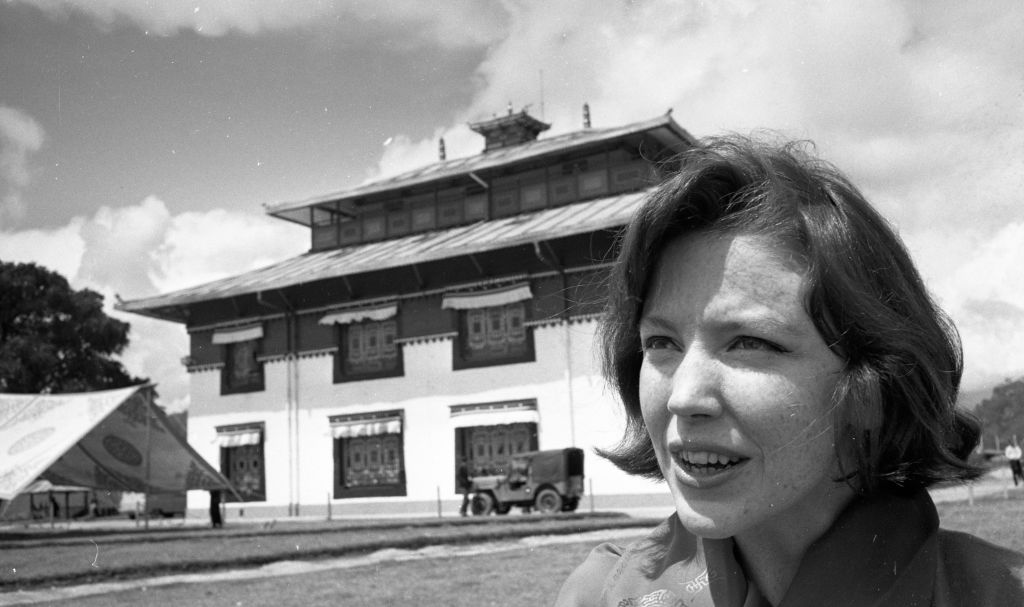 REPORTERS ASSOCIES, Getty Images
REPORTERS ASSOCIES, Getty Images
21. The Stars Delayed Her Wedding Day
Hope Cooke and the Crown Prince were eager to marry and began to plan a wedding for the following year, 1962. However, the plans stalled—all for an unexpected reason. Multiple Sikkimese and Indian astrologers warned of an unpromising year for weddings.
The prince’s culture took superstitions like these very seriously, and so the couple held off until the following year. But they would go all out when they finally could tie the knot.
22. She Had An Extravagant Buddhist Wedding
Hope Cooke and Prince Namgyal married on March 20, 1963. The wedding took place in a Buddhist monastery where the bride and groom both wore near-identical, rich ceremonial robes with brocade pattern. Both also had traditional scarves placed around their necks during the proceedings.
The ceremony lasted for several hours, partly because a procession of 14 lamas oversaw the ceremony. Cooke’s life was changed forever.
23. She Was An American First
Hope Cooke now found herself in a position rare to most Americans: she had a royal title. Indeed, she was the first American-born Queen consort of Sikkim. The only other American with a comparable position was actress Grace Kelly, who in 1956 had married the Prince of Monaco.
But a small European country like Monaco was a world away from where Cooke now found herself.
24. She Moved To A Fairytale Land
Following the wedding, Hope Cooke immediately moved to Sikkim. She was in for a big surprise. Though relatively poor and remote, Sikkim was a wonderful change of scenery from Cooke’s hometown of New York. The Himalayan landscape boasted stunning emerald green hills, snow capped mountains, and hundreds of varieties of wild orchids.
Local wildlife included pandas and snow lions; and Sikkim was home to the world’s largest crop of cardamom. The caveat? Cooke’s new home may have been more appealing than her new husband.
 The Chogyal of Sikkim Palden Thondup Namgyal, Sikkim (1971)
The Chogyal of Sikkim Palden Thondup Namgyal, Sikkim (1971)
25. She Was A Homebody
Though seemingly adventurous due to her well-traveled young life, Hope Cooke quickly settled into her new home and seemed to show little interest in anything outside it at first. She seemed infatuated with the romantic idea of nesting in her new palace, perhaps more so than with the idea of her new husband.
However, she did long to start a family with him, writing “I want a family so much. I want to fill this nest, make it a real home”. But the palace came with one built in.
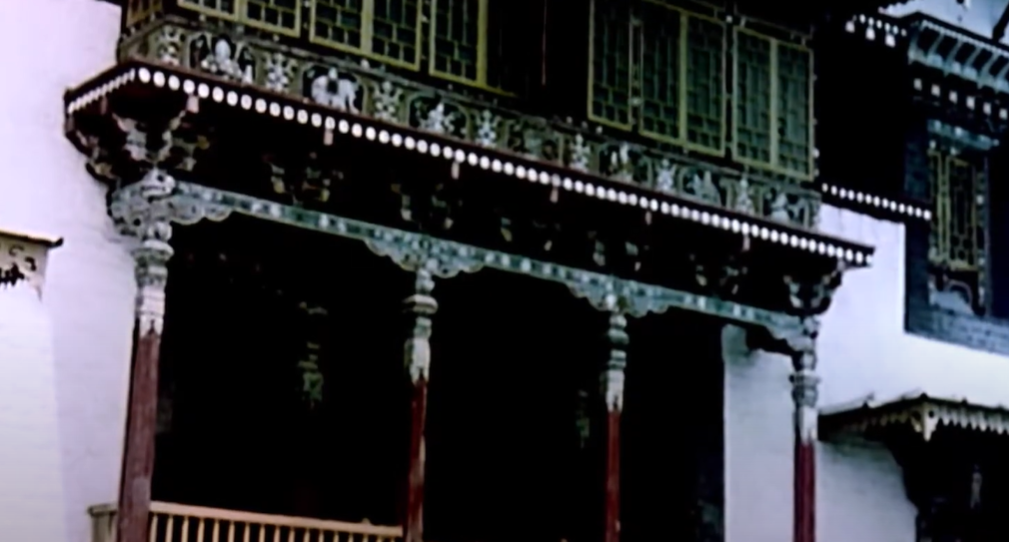 The Chogyal of Sikkim Palden Thondup Namgyal, Sikkim (1971)
The Chogyal of Sikkim Palden Thondup Namgyal, Sikkim (1971)
26. She Loved Her Stepchildren
With her marriage, Hope Cooke became stepmother to the Crown Prince’s two sons and one daughter, a role she thoroughly embraced. Cooke developed a deep affection for Namgyal’s kids and perhaps saw a chance to reclaim a childhood for herself after her own turbulent one.
She and the Crown Prince would go on to have two children together, and the palace felt the strain.
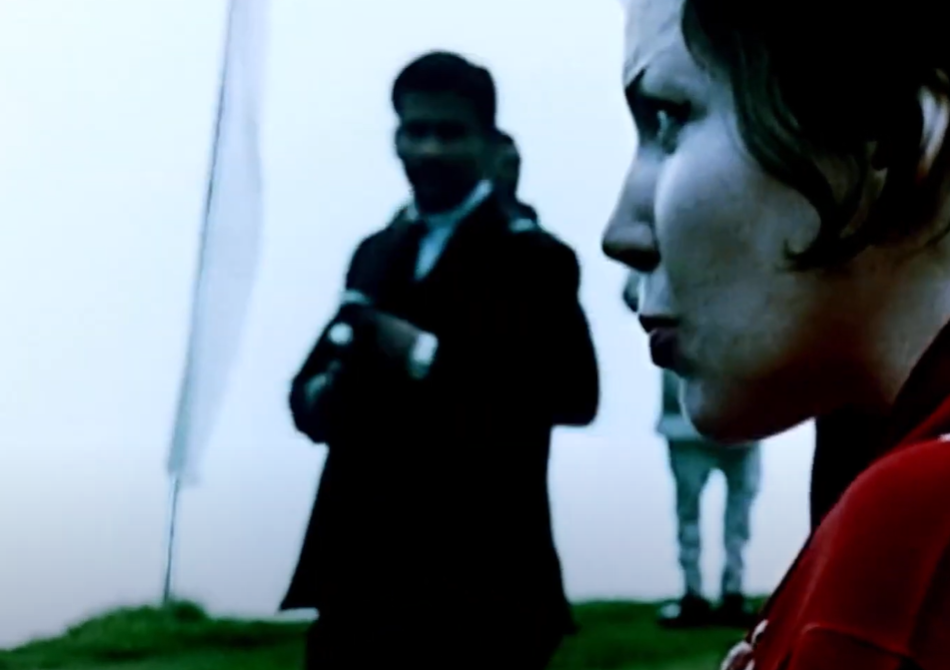 The Chogyal of Sikkim Palden Thondup Namgyal, Sikkim (1971)
The Chogyal of Sikkim Palden Thondup Namgyal, Sikkim (1971)
27. They Stretched Their Resources
Following the birth of Cooke’s second child, the Royal Palace now overflowed with offspring. For a palace, the lodgings were fairly modest, with only five bedrooms to share between two parents, five children, and live-in staff. The food budget must have been astronomical. The Royal Family allegedly consumed 12 dozen eggs a week. Unsurprisingly, not everyone loved the arrangements.
28. She Clashed With Her Sister-In-Law
Not all welcomed Cooke’s entry into the palace. The Crown Prince’s favorite sister, Princess Pema Tsedeun, better known as Kukula, bristled at the presence of an outsider. Kukula was politically savvy with courteous mannerisms that hid a deeper ambition. Her personality immediately clashed with Cooke’s, and both waged a quiet war over influencing the King-to-be. Kukula’s attitude towards Hope may have reflected a wider Sikkimese opinion.
29. Her New People Mistrusted Her
Cooke’s transition to her new country was not a smooth one. As she was an immediate public figure, the Sikkimese population were wary of an outsider coming to their land and potentially influencing politics to her benefit, seeing her as an “American plant” in the region. She took drastic measures to assuage this public fear.
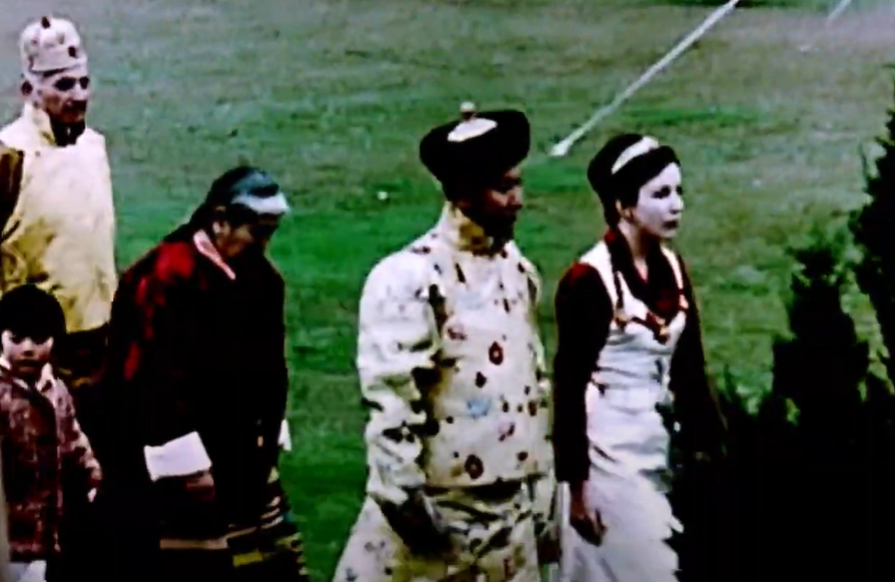 The Chogyal of Sikkim Palden Thondup Namgyal, Sikkim (1971)
The Chogyal of Sikkim Palden Thondup Namgyal, Sikkim (1971)
30. She Renounced Her Citizenship
Hope Cooke was eager to demonstrate where her loyalties lay to the Sikkimese people. Upon marrying the Crown Prince, she did something drastic to show it. Cooke renounced her US citizenship as a gesture towards her new identity. Certain American politicians disapproved of this, and she attracted disapproval from her native high society as well.
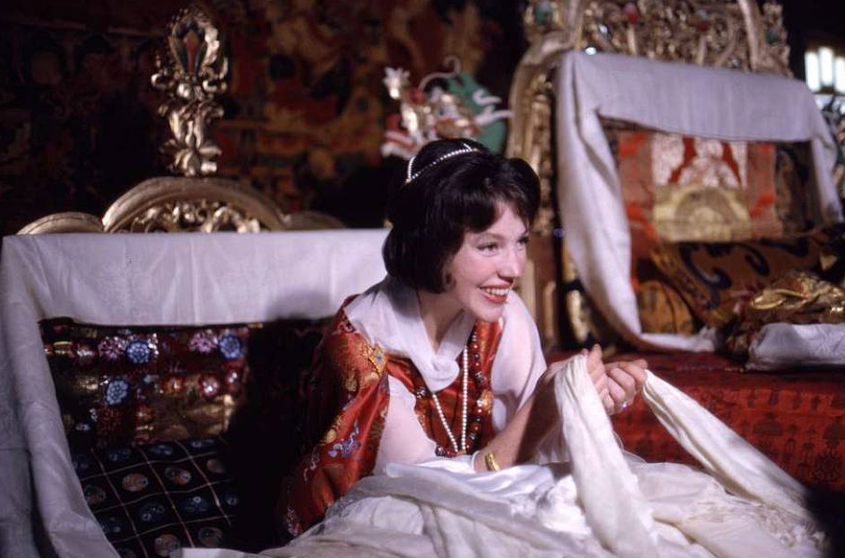 Kandell, Alice S., LOC's Public Domain Image Collections - GetArchive
Kandell, Alice S., LOC's Public Domain Image Collections - GetArchive
31. Old Money Rejected Her
Following the renunciation of her American citizenship, Hope Cooke found herself removed from the Social Register, a publication in the United States that serves as an index and directory for American high society, typically for members of well-connected, “old money” families. Her exclusion from the register was a symbolic rejection by her old social circles.
But where one publication bristled at her perceived betrayal, others embraced the new Queen consort’s story.
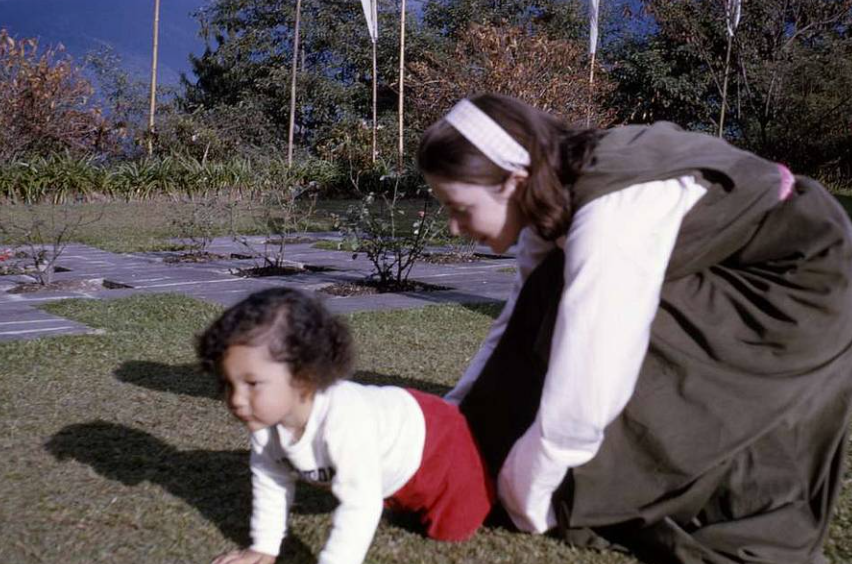 Kandell, Alice S., LOC's Public Domain Image Collections - GetArchive
Kandell, Alice S., LOC's Public Domain Image Collections - GetArchive
32. She Received A Lot Of Media Attention
Media across the globe widely reported Cooke's marriage, and her story quickly became a sensation with many high-profile publications. National Geographic published an extensive report on her and the Crown Prince’s wedding. The New Yorker profiled the couple on one of their annual trips to the United States. And Vogue, in an interview with Cooke, questioned her about her skincare routine and inquired how she kept herself so pretty while living at a 20,000-foot altitude.
Cooke deserved more credit for her preparedness than the locals gave her.
33. She Was More Spiritual Than The Locals
Cooke’s husband was Buddhist but interestingly, she chose not to convert. The reasons for this were unclear and especially odd. Cooke had actually practiced Buddhism from a young age, having developed an early fascination with it. Upon meeting her, then US Secretary of State Henry Kissinger remarked that “she has become more Buddhist than the population”.
This was a good look for the wife of a Crown Prince, but Cooke would ascend higher than that.
34. Her Husband Was An Accomplished Ruler
Two years after marrying Cooke, Namgyal was crowned Chogyal (king) of Sikkim on April 4, 1965. Perhaps due to Hope’s influence, her husband was a relatively progressive ruler and oversaw a period of cultural prosperity for the country: The literacy rate and per capita income of Sikkim were twice as high as neighboring countries in the region, including India.
The threat of annexation by India loomed, but the Chogyal managed to retain the country’s independence…for now. And things were much less rosy behind closed doors.
35. Her Husband Had A Mean Streak
Cooke’s seemingly idyllic marriage hid some darker secrets. Her husband, despite his outwardly progressive actions and enlightened demeanor, was a heavy drinker who would often throw tantrums while inebriated. The Chogyal fancied himself a womanizer as well. This attitude began to rear its odious head in his interactions with his wife.
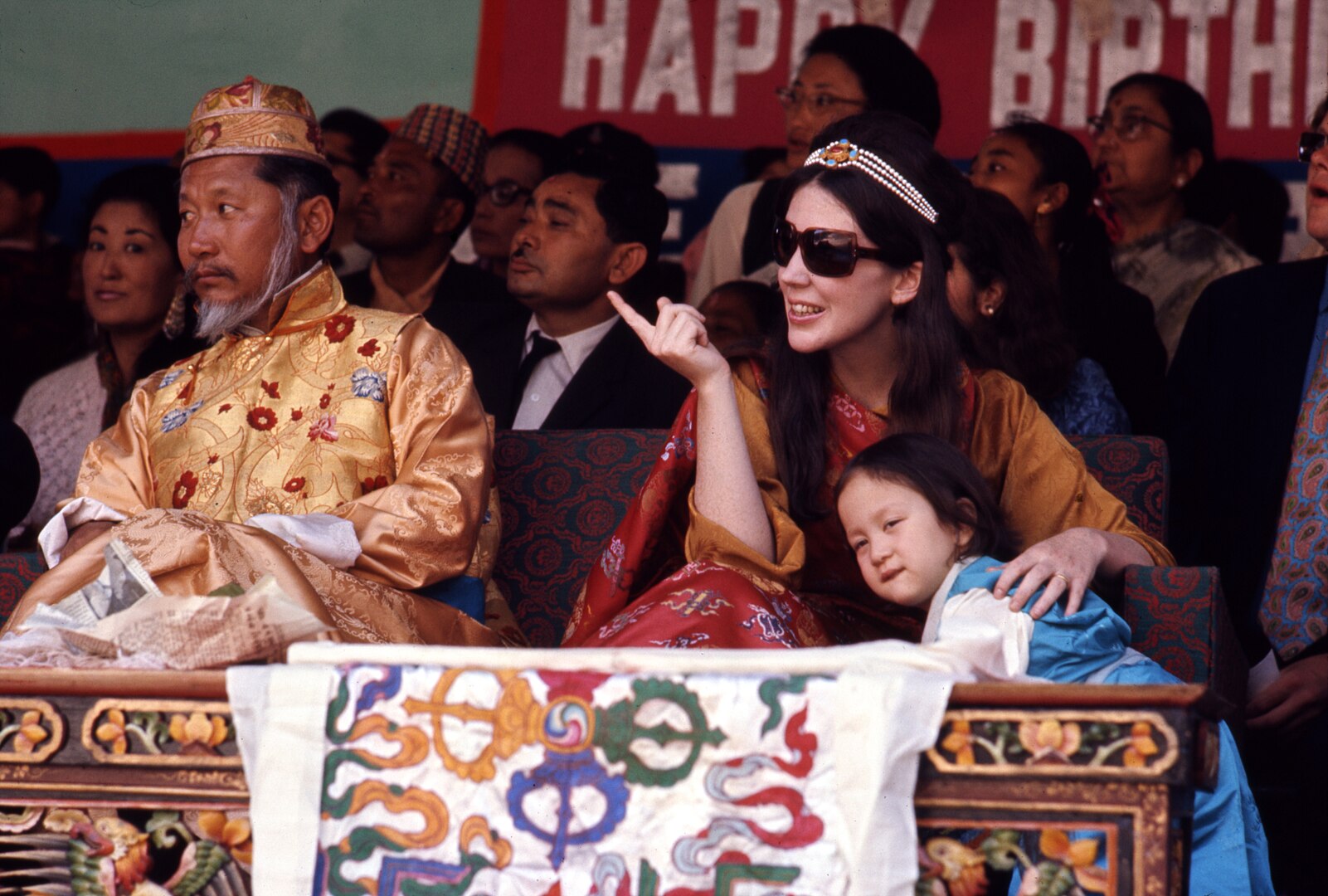 Alice S. Kandell, Wikimedia Commons
Alice S. Kandell, Wikimedia Commons
36. Her Domestic Disputes Were Dramatic
Hope Cooke got a look at the Chogyal’s sinister side early on. She had brought her record player with her to the Palace, an item she considered her “lifeline to the West”. When Hope was feeling homesick, she would listen to Joan Baez records. Not long after their honeymoon, her husband got angry one day when he discovered she had not cleaned the refrigerator.
In the escalating argument, he threw Cooke’s record player out the window. Their marriage faced many such tests.
37. Her Husband Was Unfaithful…
It was no secret that her marriage was difficult, but in her autobiography, Hope Cooke revealed the devastating truth. Throughout their entire marriage, her husband was having an affair. The Chogyal had actually begun a relationship with the woman in question before he married Hope. The King’s mistress was Belgian and also married.
He kept letters around, which Cooke would read when she could get her hands on them. Though she tried to confront him, he brushed it off. But there may have been other reasons why she tolerated his infidelity.
38. …She Was Unfaithful Too
Hope Cooke also sought the romantic affection lacking in her marriage outside the home. On a solo trip back to New York, she engaged in an affair with a friend from her adolescence. The affair weighed heavily on Cooke’s conscience, however, and she began to adopt some questionable coping methods.
39. She Fell Into Substance Misuse
To cope with her guilt, loveless marriage, and shaky political position, Hope Cooke began to drink more frequently. She drank beer in the morning and switched to whiskey at noon just to get through the day. The habit became a daily one and, to make matters worse, she developed a dependency on Valium as well, which led her to lounging in bed for days at a time.
The pressures she felt then were nothing compared to what was coming.
40. Her New Home Began To Implode
Though she didn’t know it at the time, Hope Cooke had married into Sikkimese royalty at a dangerous time for the country. Despite some of the Chogyal’s progressive ideas, unrest and dissatisfaction with the monarchy was bubbling under the surface. By 1973, there were widespread protests calling for democratic reform.
Namgyal called on neighboring India for assistance in stabilizing the mood—but India’s help came with new pressure to annex into the state. That’s when Cooke tried to interfere.
41. She Tried Her Hand At Politics
Hope Cooke, sensing the tension within the country and her husband’s weakening grasp on power, attempted to step into the political arena in her own way. A skilled writer, she wrote an article demanding that Darjeeling, formerly a part of Sikkim and now in India, return to Sikkimese rule. She argued that all land within the original borders of Sikkim belonged eternally to the ruler. This ended up doing more harm than good.
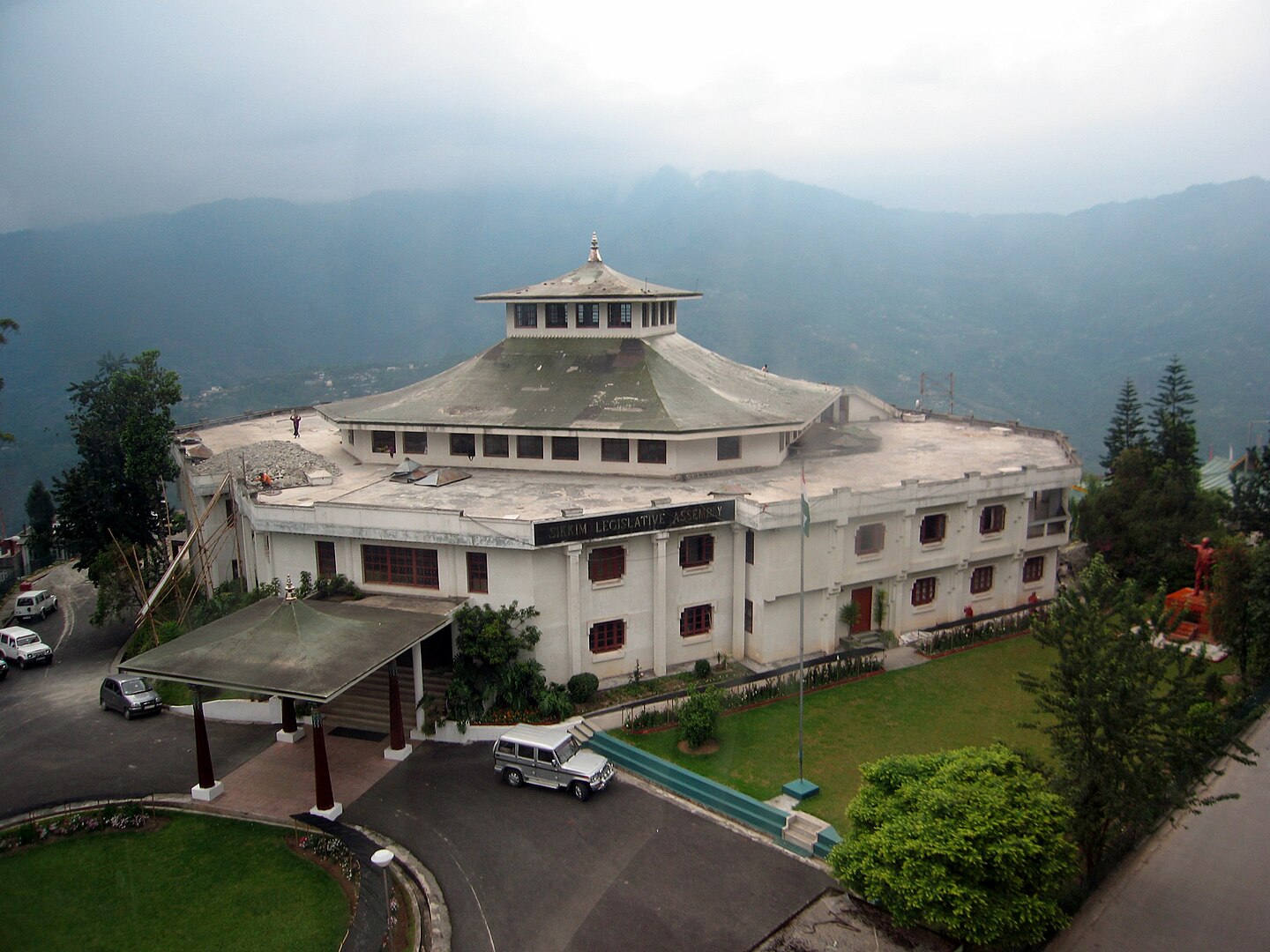 Kalyan, CC BY-SA 2.0, Wikimedia Commons
Kalyan, CC BY-SA 2.0, Wikimedia Commons
42. Her Political Maneuvers Backfired
Perhaps due to her outsider status, Cooke’s article received harsh criticism as tone deaf and unhelpful. It only served to weaken relations with the already-aggressive Indian government. Her interference in political matters only raised the weariness of her among the masses and political elite alike, with the latter growing suspicious that she was nothing more than a CIA plant in the region. Her gamble had not paid off.
 kalyan3, CC BY-SA 2.0, Wikimedia Commons
kalyan3, CC BY-SA 2.0, Wikimedia Commons
43. Her World Crumbled Around Her
Tensions reached a boiling point when, in 1975, massive crowds of Sikkimese marched on the palace in protest of the monarchy. Like her marriage, Cooke’s dominion was dissolving before her eyes. Perhaps the final thing she and her husband shared was their downfall.
44. Her Reign Ended
Cooke’s fairytale ended on April 10, 1975, when the Chogyal was officially deposed. Confined to his palace on house arrest, plans came together for the country of Sikkim to merge into India as a state under the rule of the Indian government. Hope gained an unwanted place in history.
45. She Was A Sikkimese Last
Just 10 years earlier, when her husband ascended, Hope Cooke made history when she became the first American-born Queen consort of Sikkim. Little did she know that she’d be adding another historical bookend to her reign. After her husband’s deposal, she was now officially the last Queen consort in Sikkimese history as well. She didn’t hang around long enough to see what perks that brought.
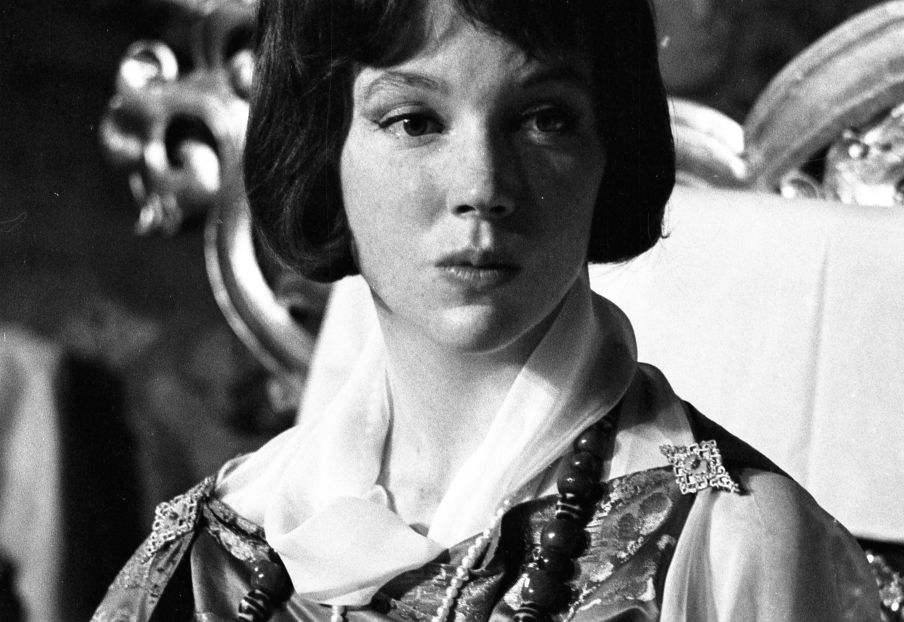 REPORTERS ASSOCIES, Getty Images
REPORTERS ASSOCIES, Getty Images
46. She Fled The Country
Not long after her husband’s deposal and house arrest, Hope Cooke left the country and fled back to New York City—taking with her the four youngest Royal children (her two biological children and two stepchildren). She attempted to set up a new life and began to dress casually to blend in with the crowds, wearing a short dress for the first time in 11 years and embarrassing her children in the process, as they had never seen her legs before.
Within a few weeks, she was comfortably set up. But there was the small matter of her renounced citizenship.
47. Her Citizenship Made It To The United States Congress
Hope Cooke sought to regain her US citizenship now that she found herself living in her country of origin once again. Her high profile allowed her to secure the support of two US Congressmen who sponsored a private bill to restore her citizenship. It passed the Senate, but some members of the House weren’t as forgiving.
48. Her Residency Appeal Made It To The Highest Office
Cooke’s previous renunciation of her citizenship irked some members of the House and they refused to sign off on the bill. Cooke was between a rock and a hard place. As a compromise, the representatives agreed to get it through if Cooke and the Senate agreed to residency instead.
After the bill passed, President of the United States, Gerald Ford, signed it into law. Cooke had one state leader on her side, even if another was ending their union.
 David Hume Kennerly, Wikimedia Commons
David Hume Kennerly, Wikimedia Commons
49. She Divorced A King
In 1980, five years after her husband lost his position as Chogyal, Hope’s marriage also ended officially in divorce. But the worst was yet to come. Just two years later, her ex-husband passed from cancer in New York, where he too had been living. Still, Cooke had life in her yet.
50. She Found Her Groove
Hope Cooke had once followed her passion across the globe—but now she found fulfillment in the place she’d first moved to after losing her parents: New York City. Cooke would go on to be a very successful writer and New York historian, teaching at Yale and her alma mater, Sarah Lawrence College.
Questioned years later about her feelings on Sikkim and her marriage, she reflected “I’m a different person now”, adding “If I’d had a sense of myself when I married, I wouldn’t have lost my boundaries in Asia.”
 I, Laslovarga, CC BY-SA 3.0, Wikimedia Commons
I, Laslovarga, CC BY-SA 3.0, Wikimedia Commons
51. She Fell In Love With Her City
Cook later remarried to fellow New York historian Mike Wallace, though the union later ended in divorce. Her children have grown up and been successful in their careers. Cooke currently lives in Brooklyn, still regularly working as a writer, historian, and lecturer. So, although her fairytale story had a tragic ending, perhaps the postscript was the real fairytale she was destined for.

